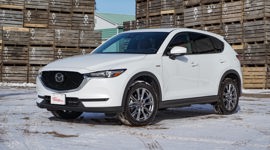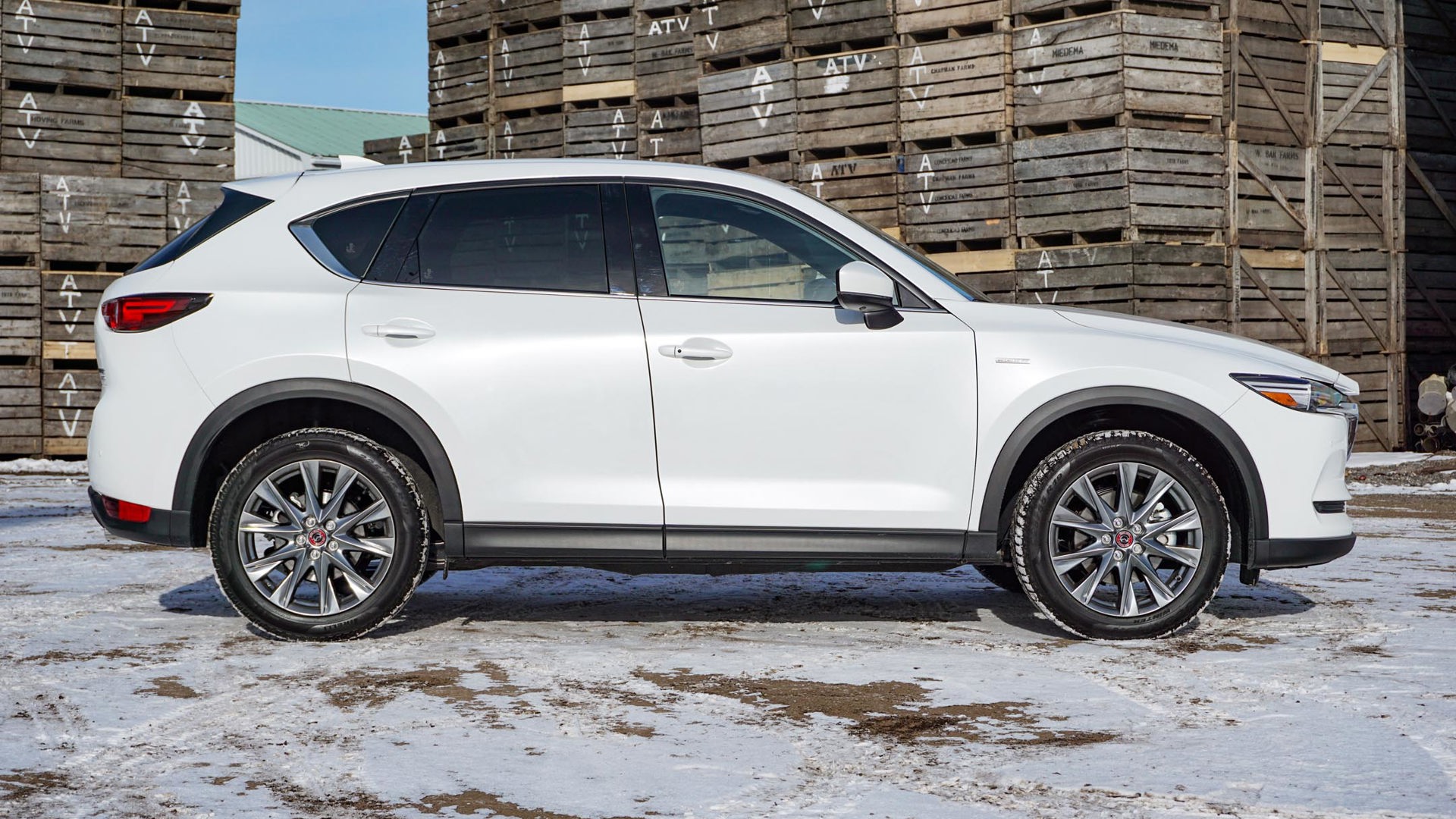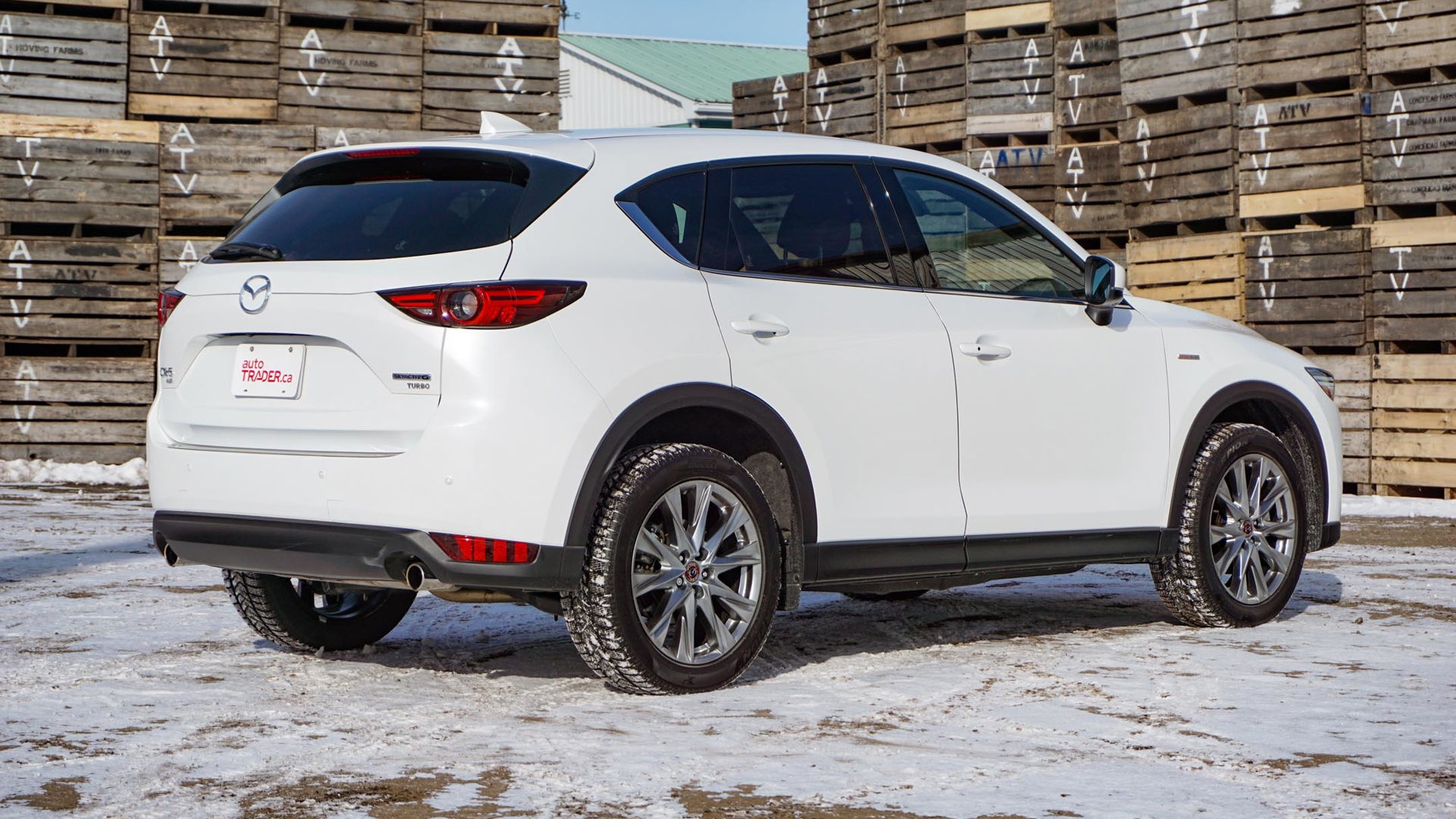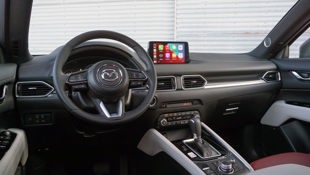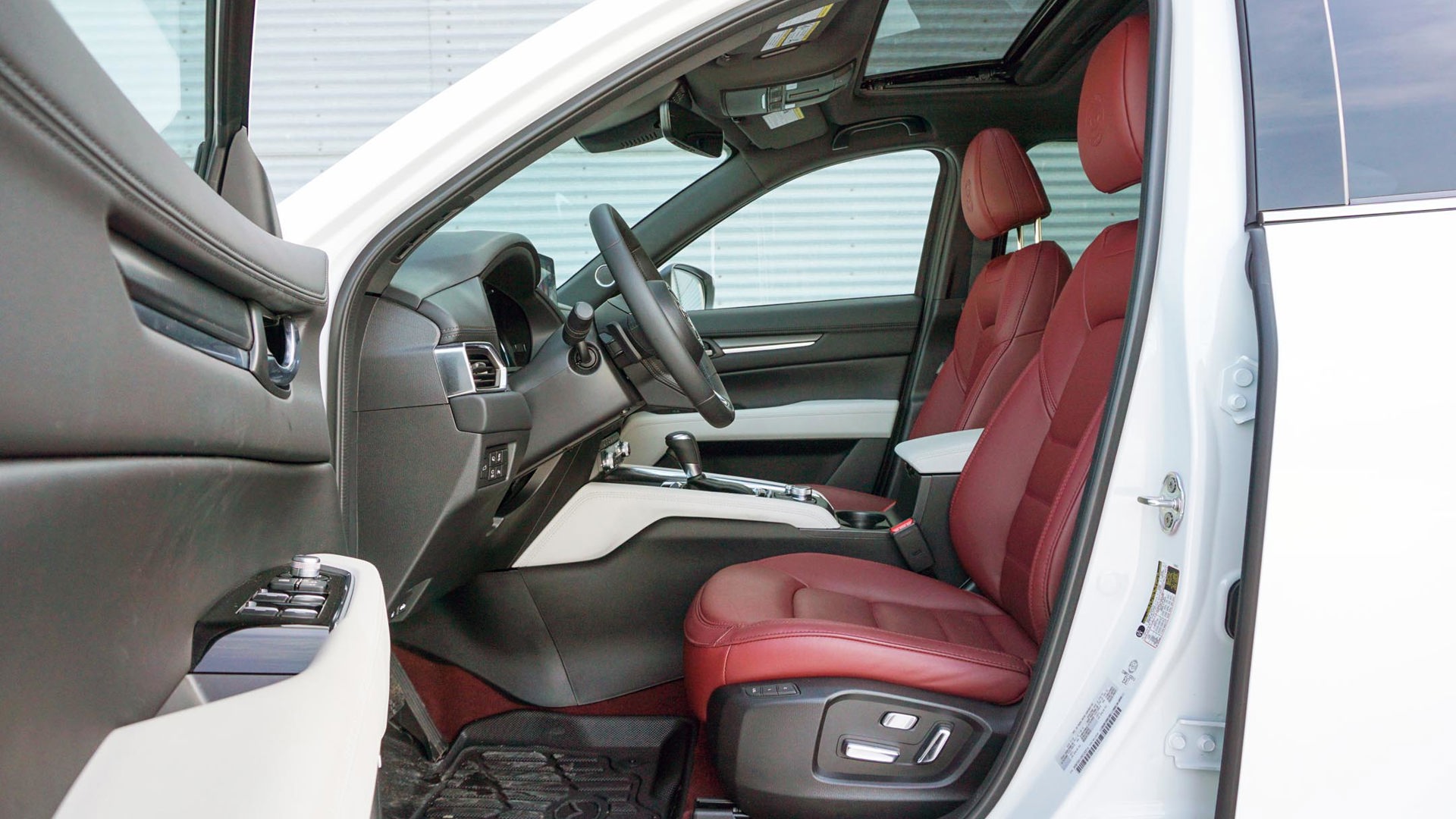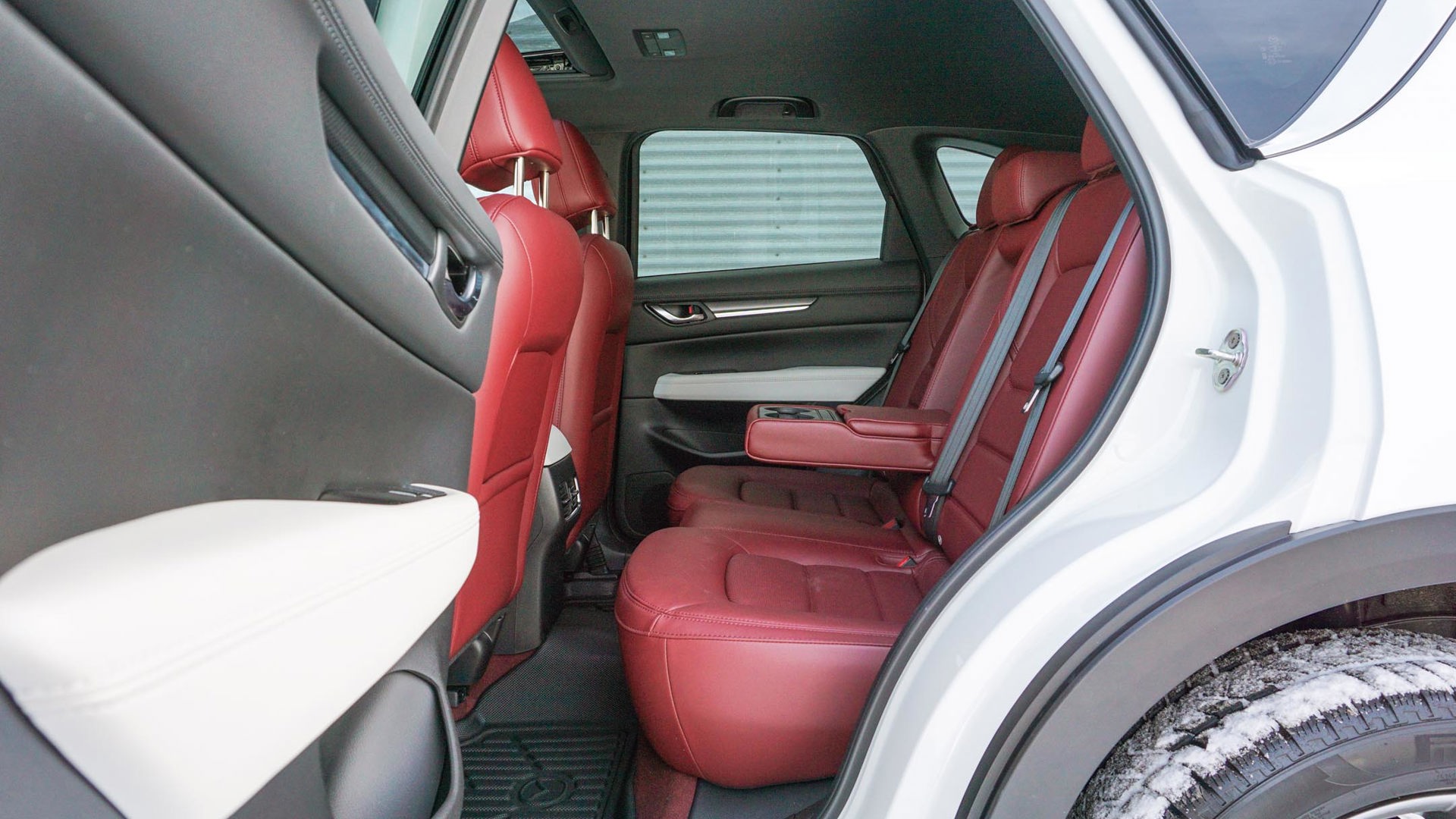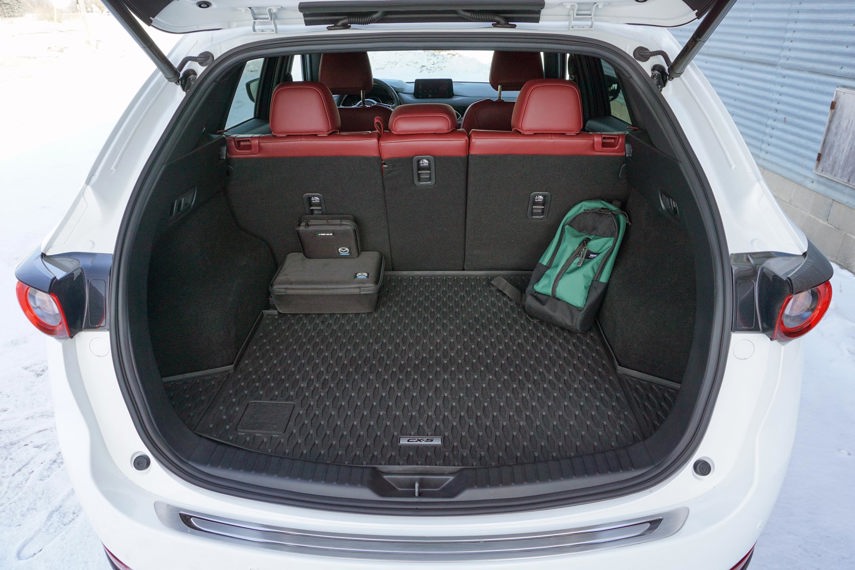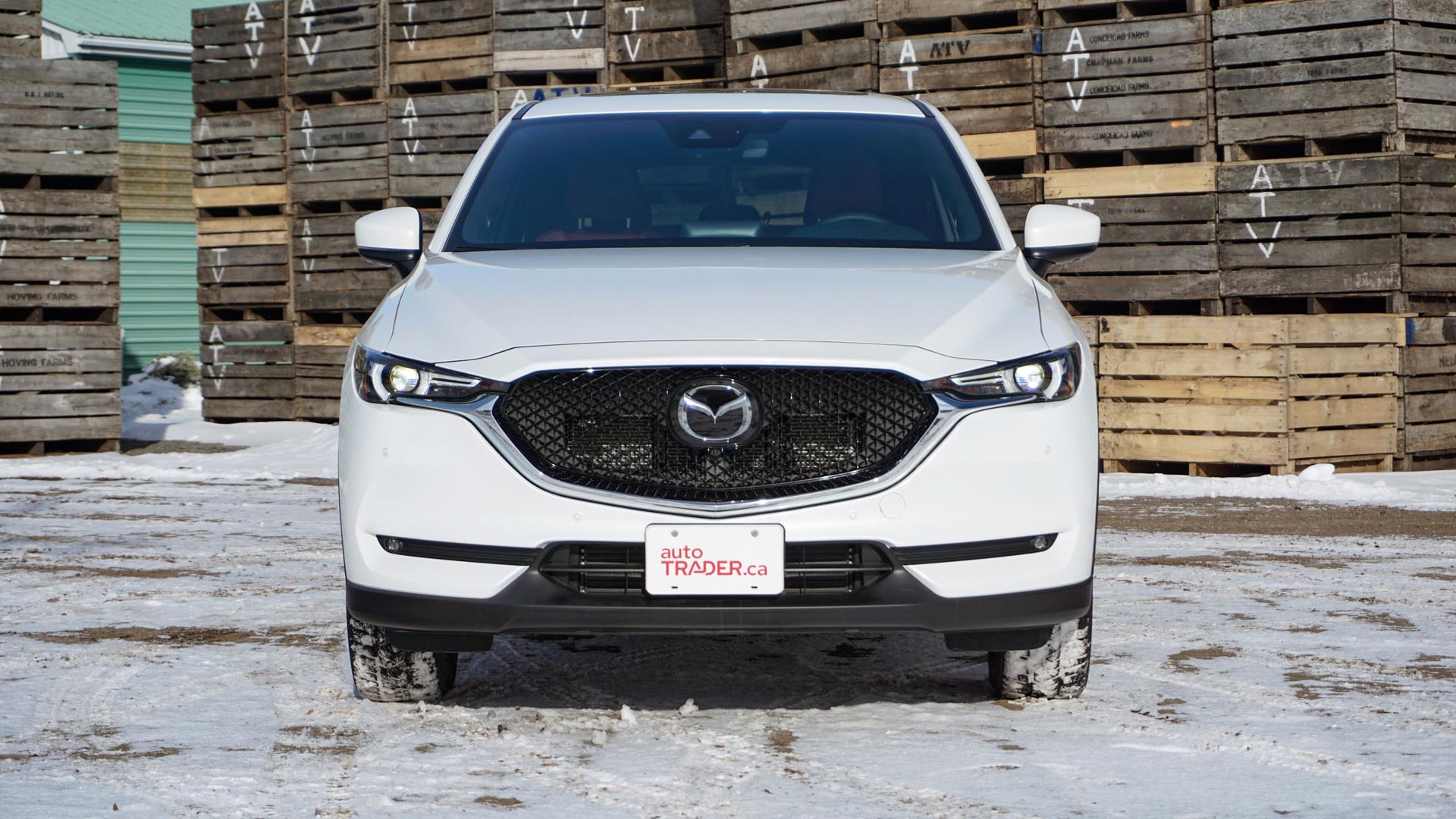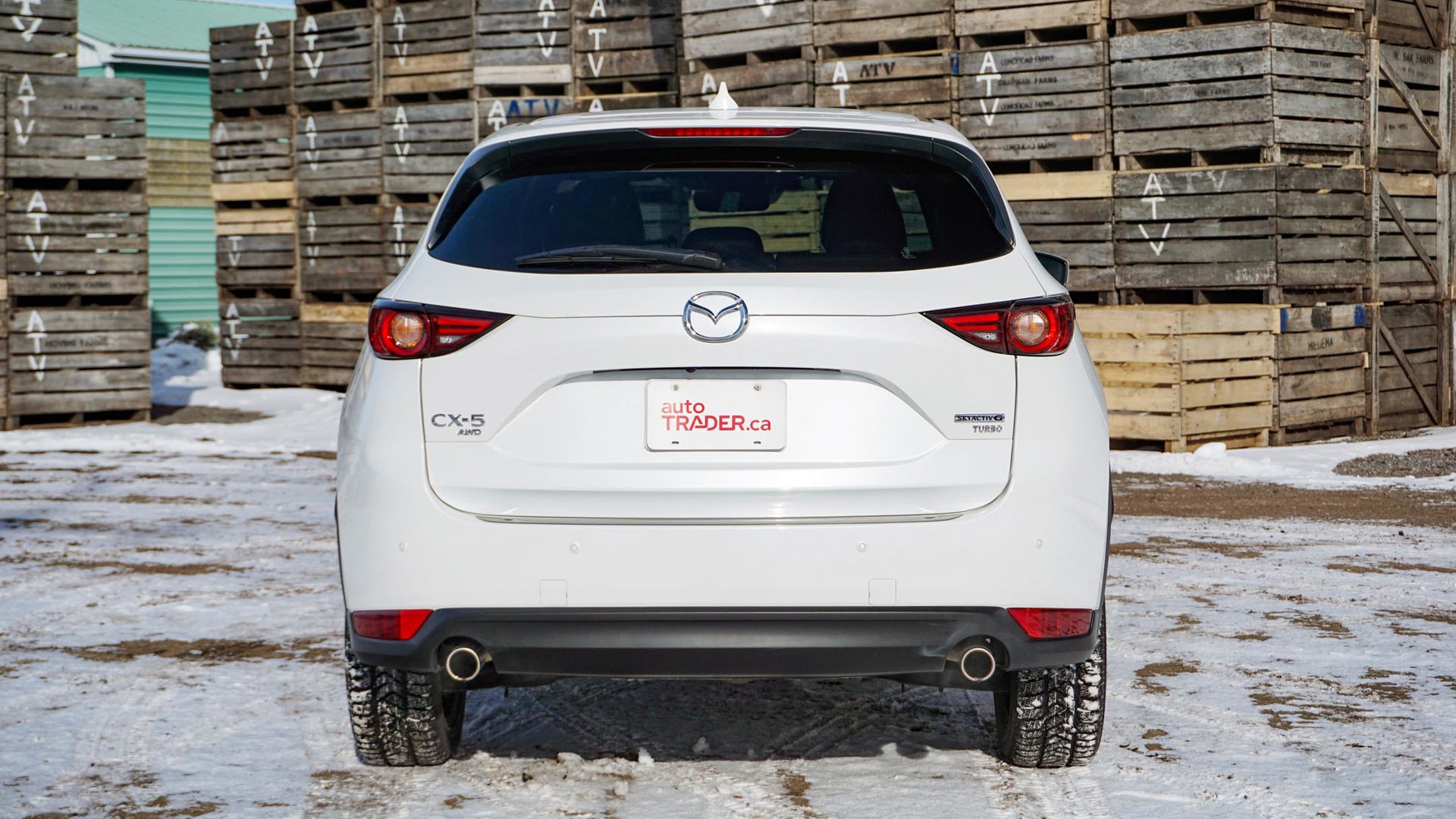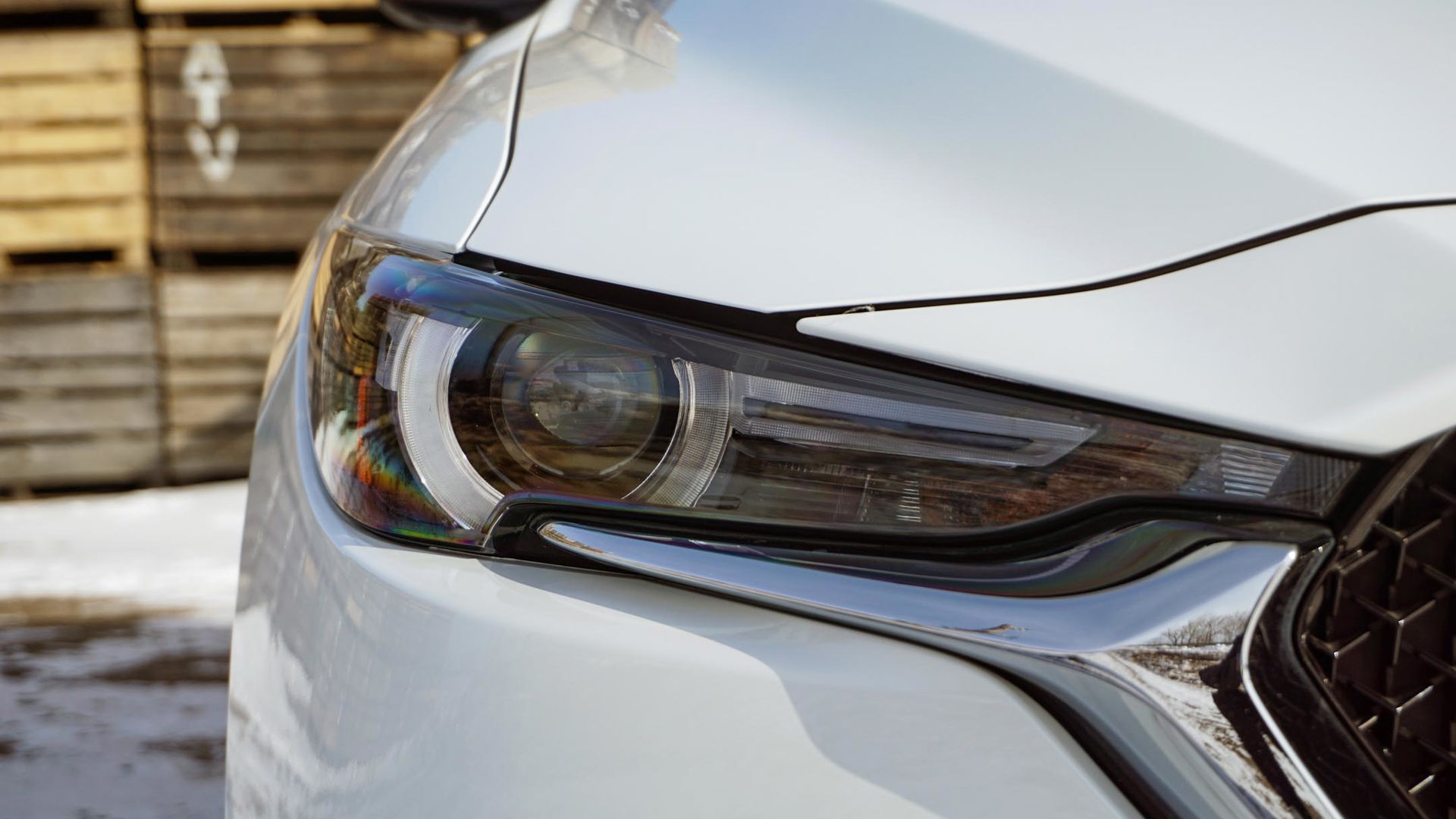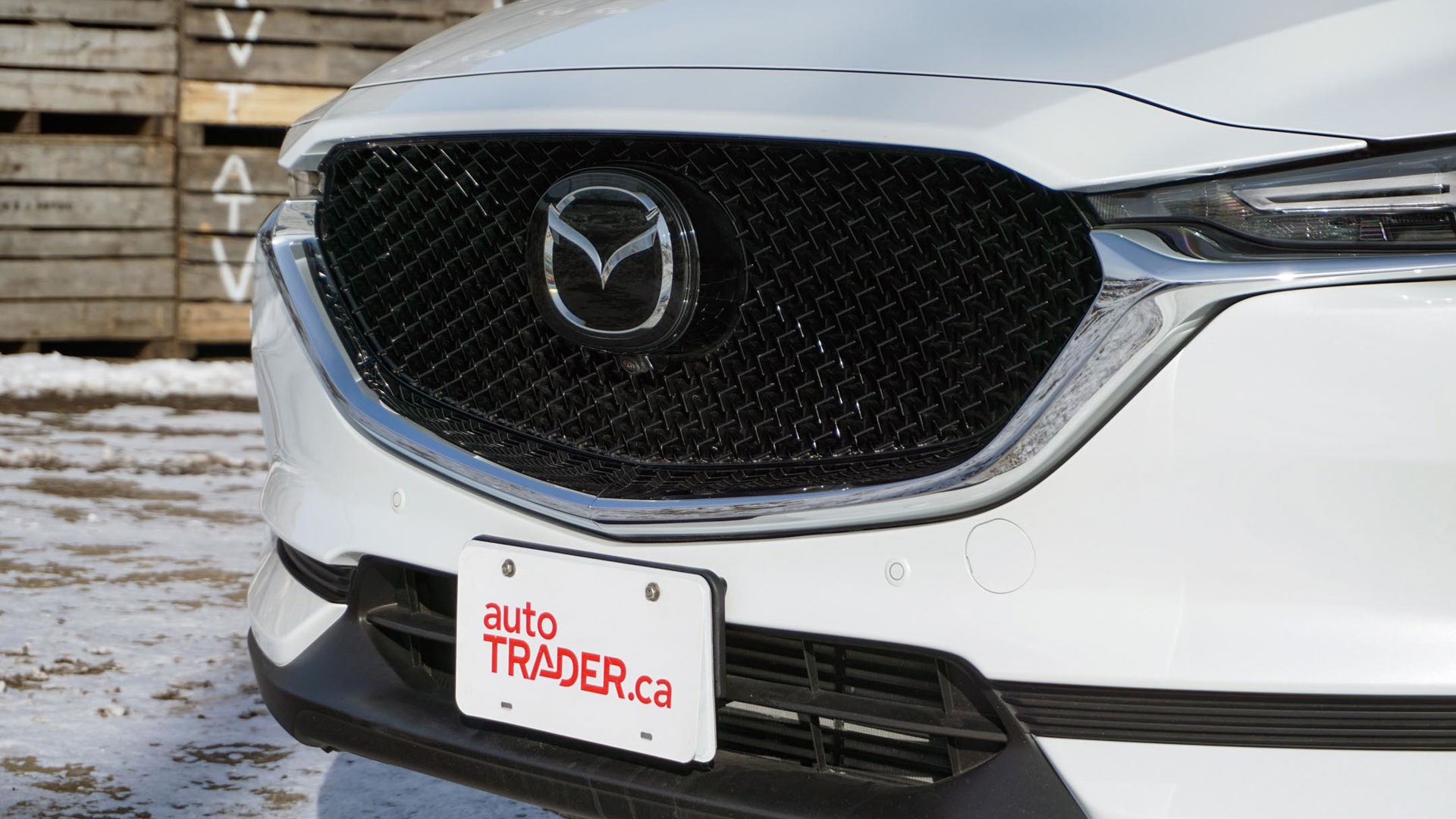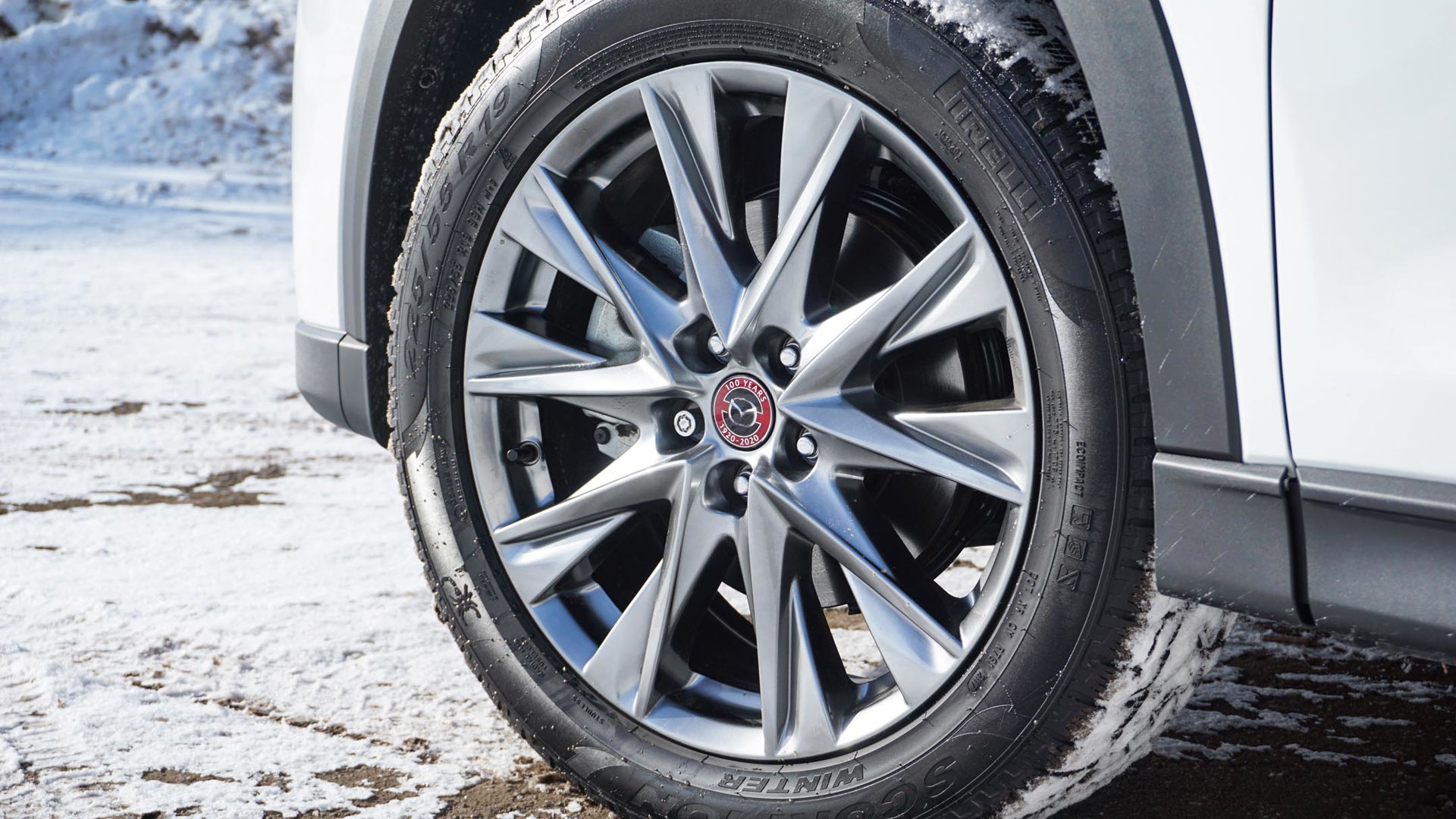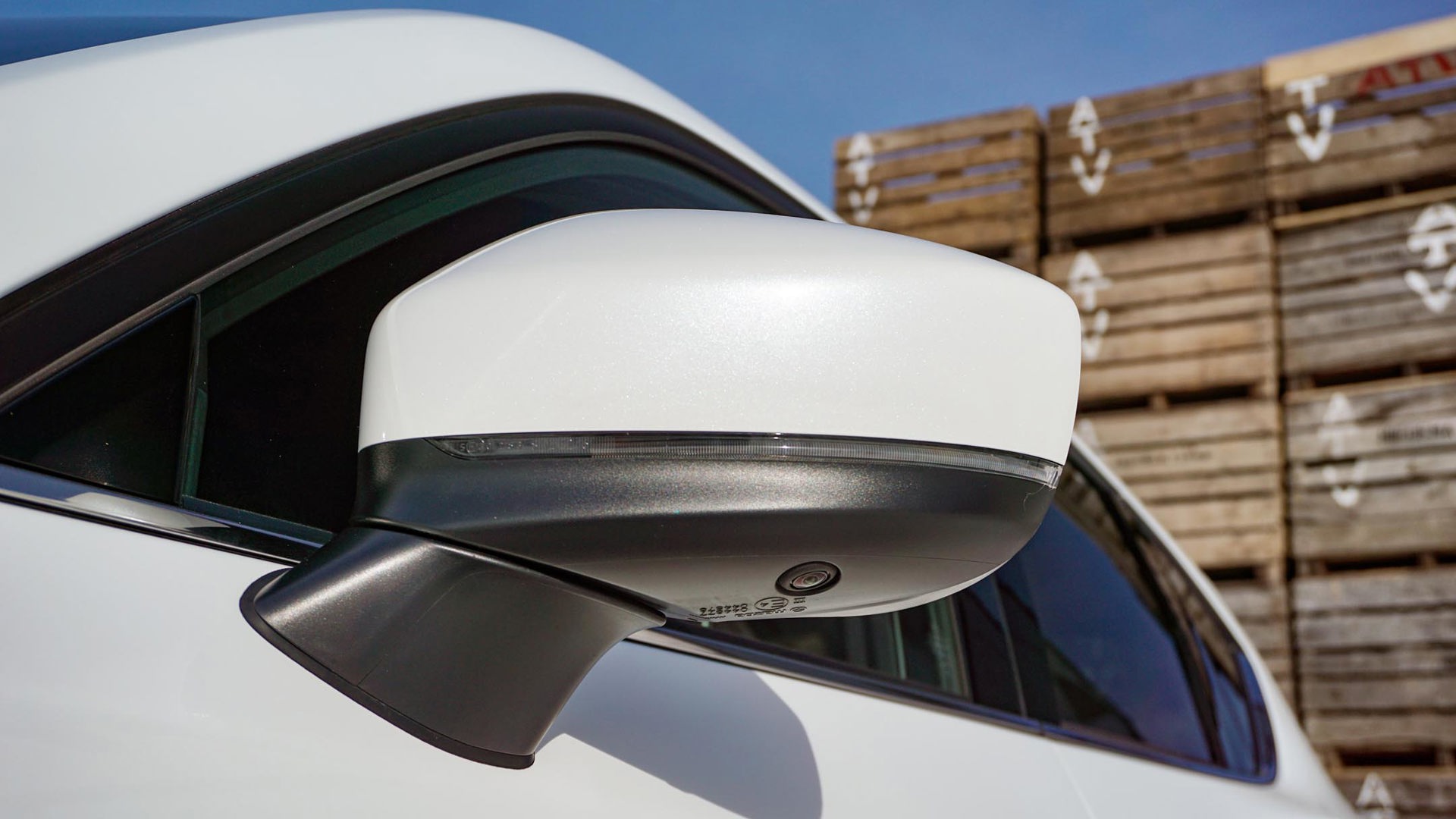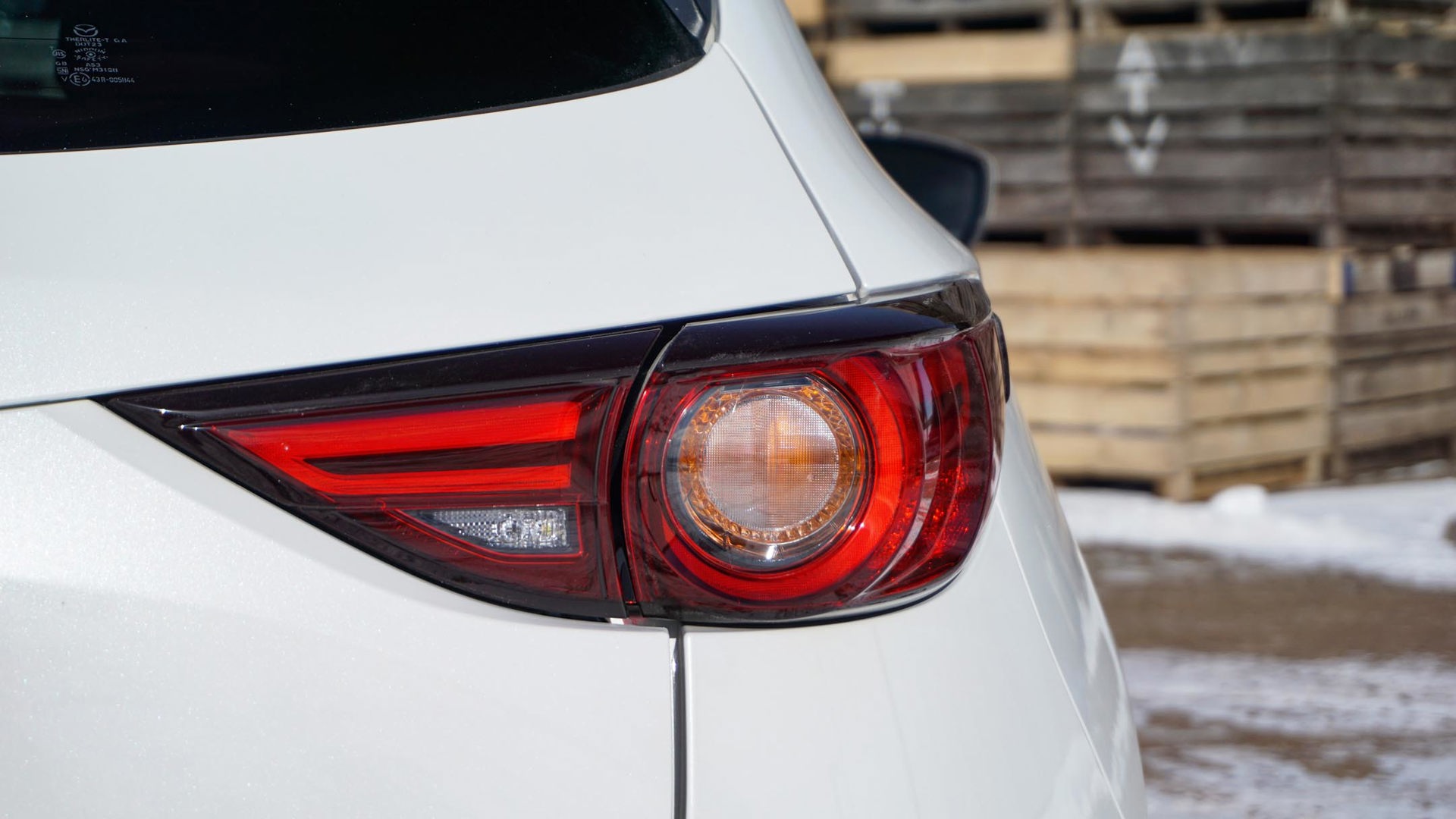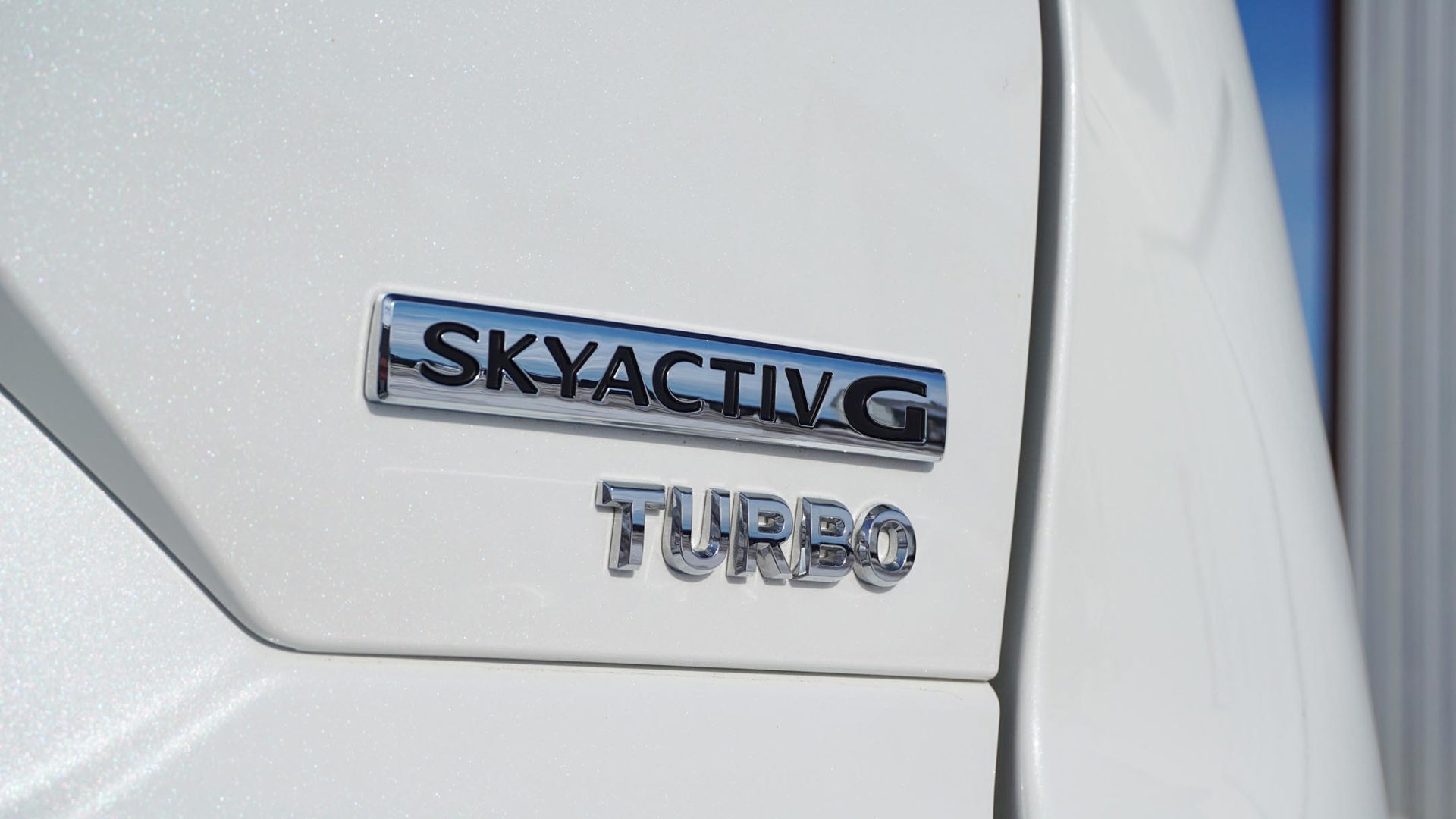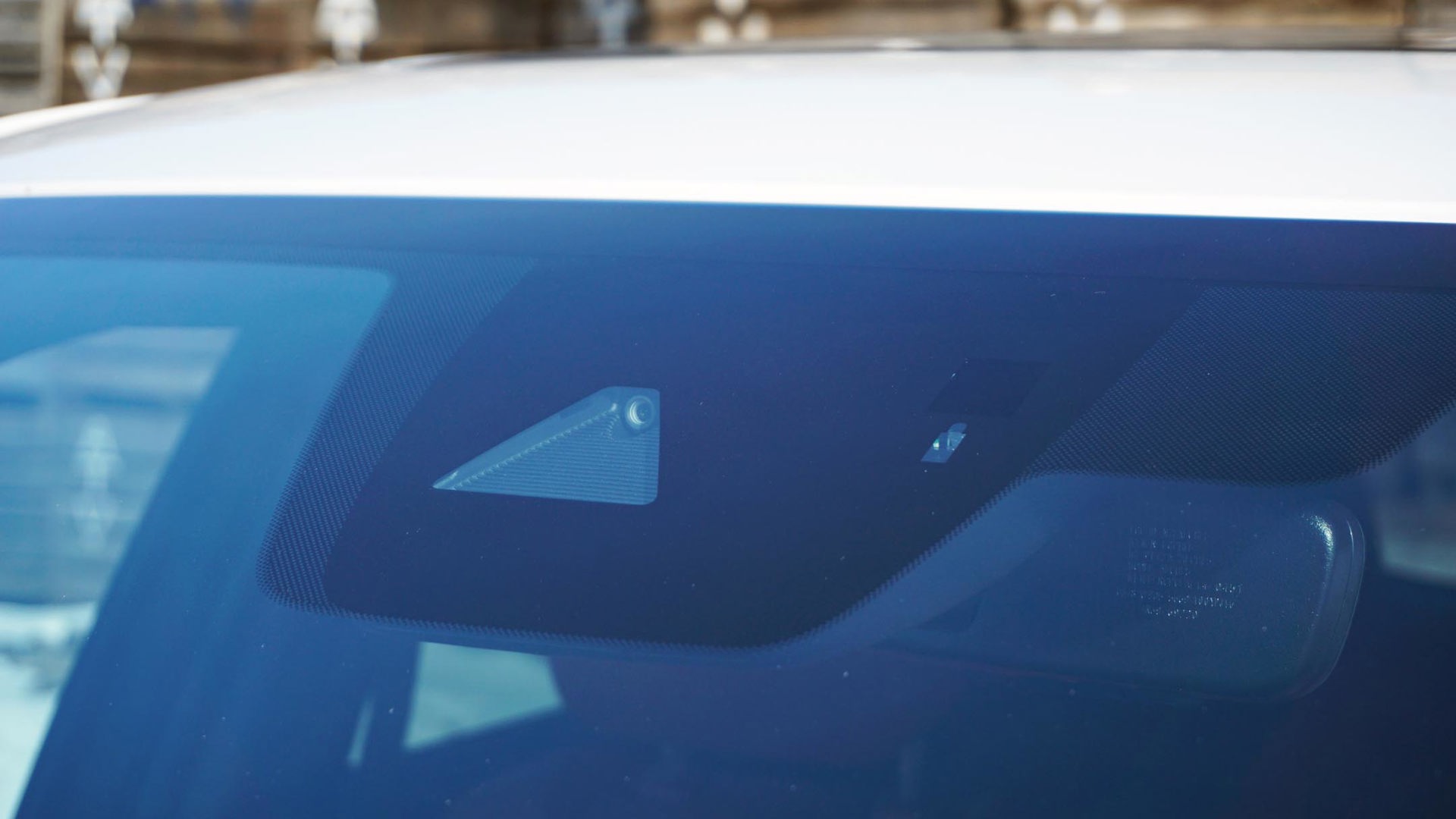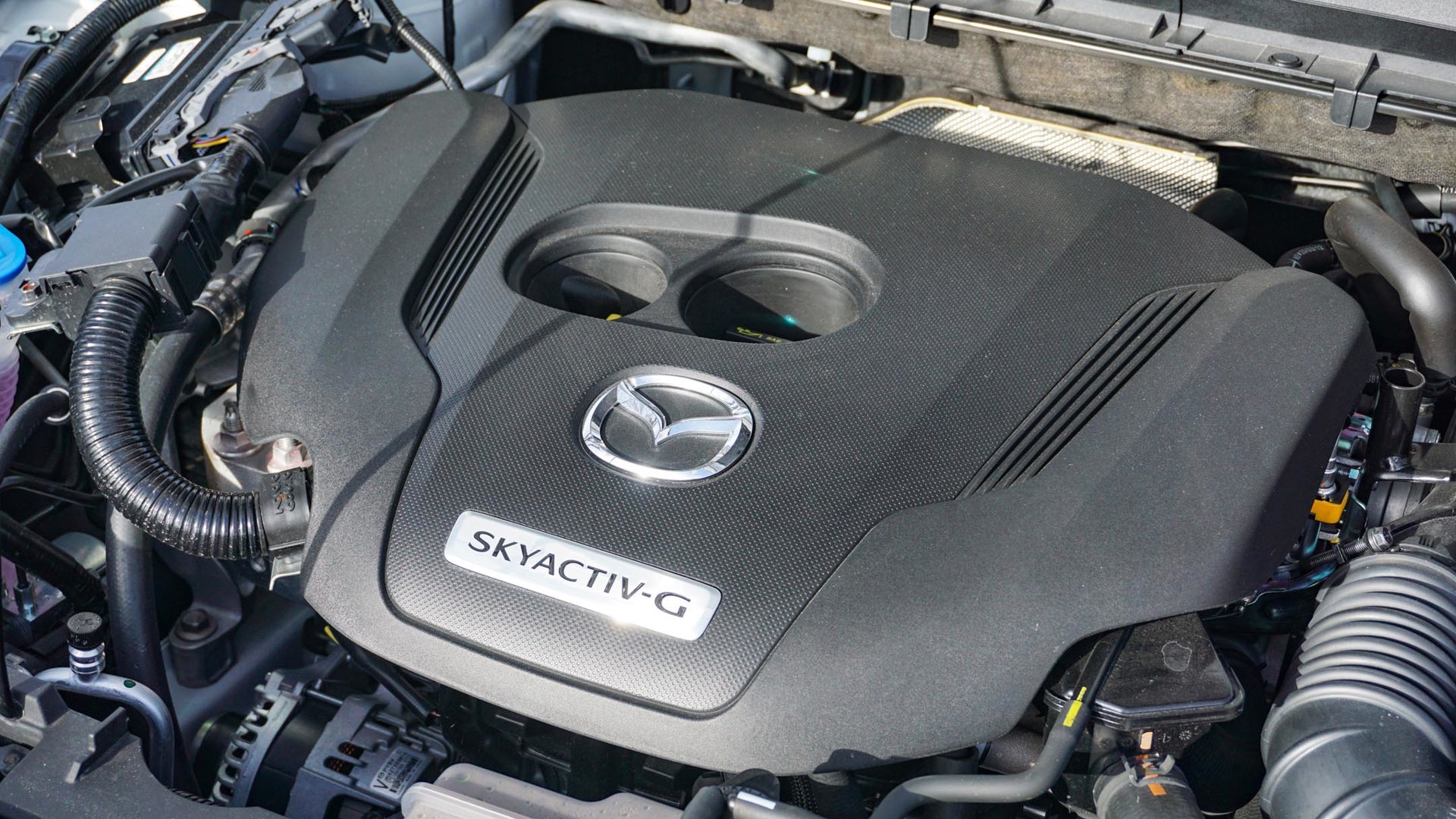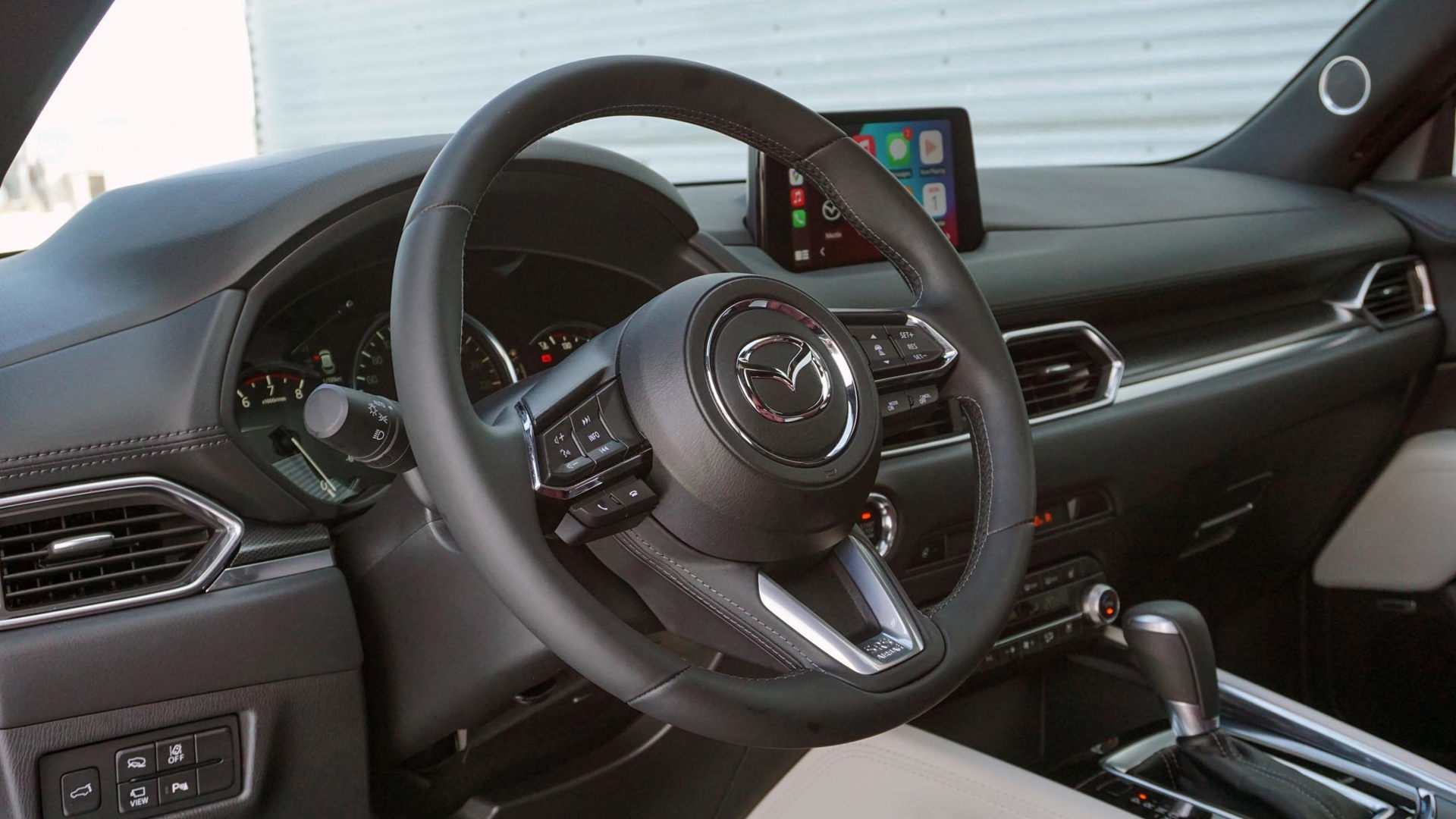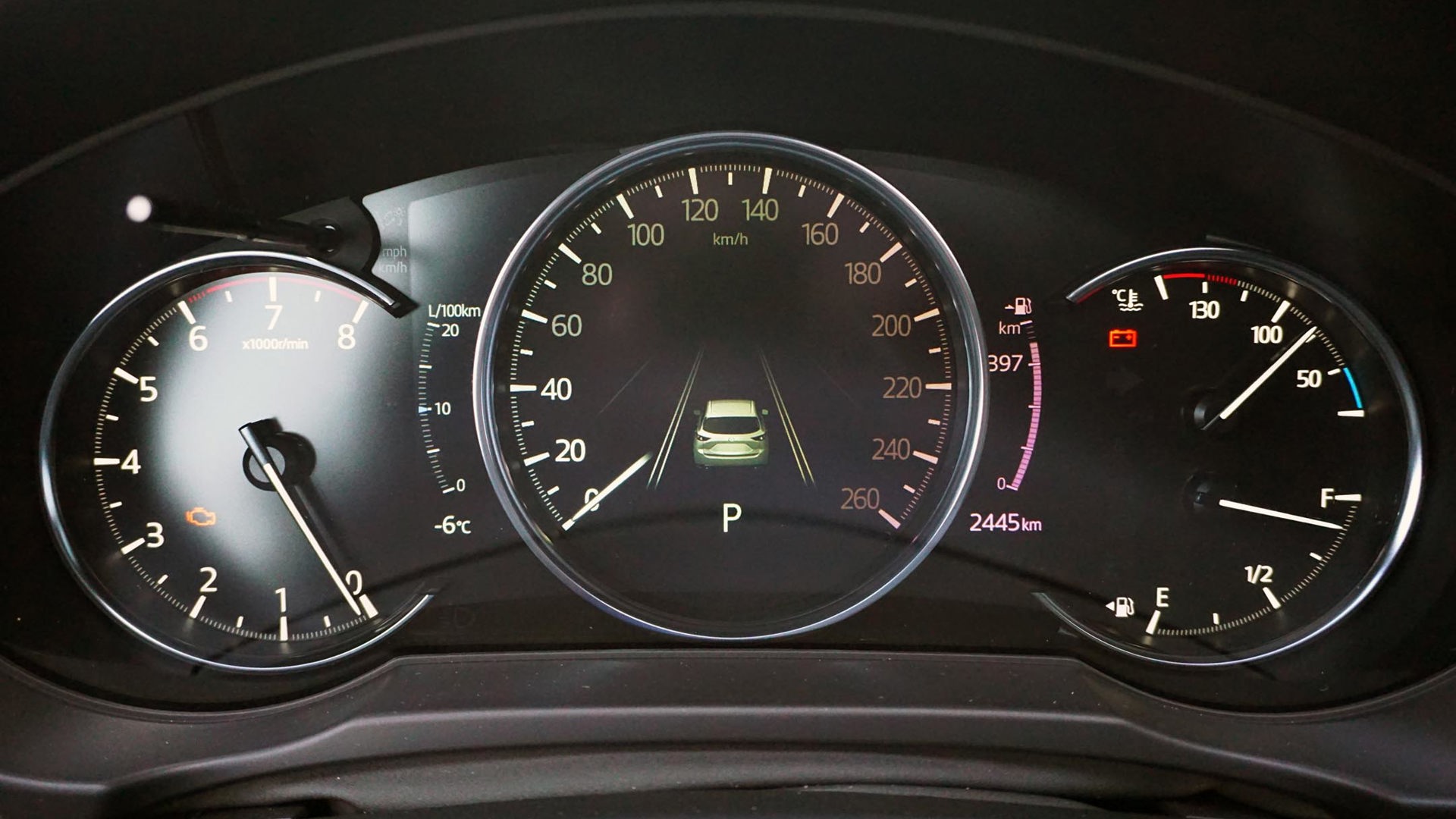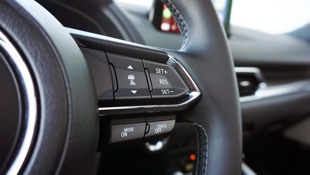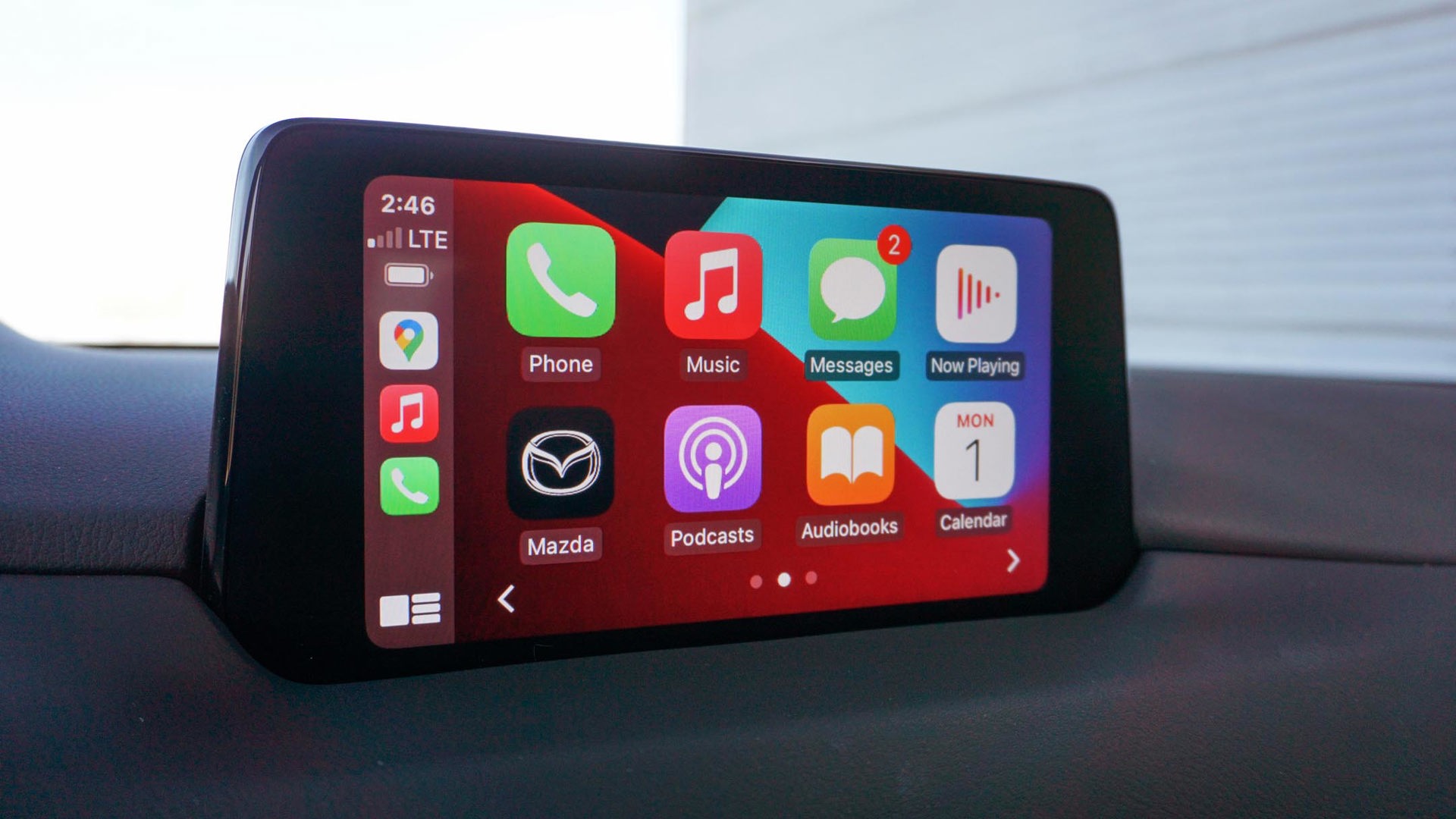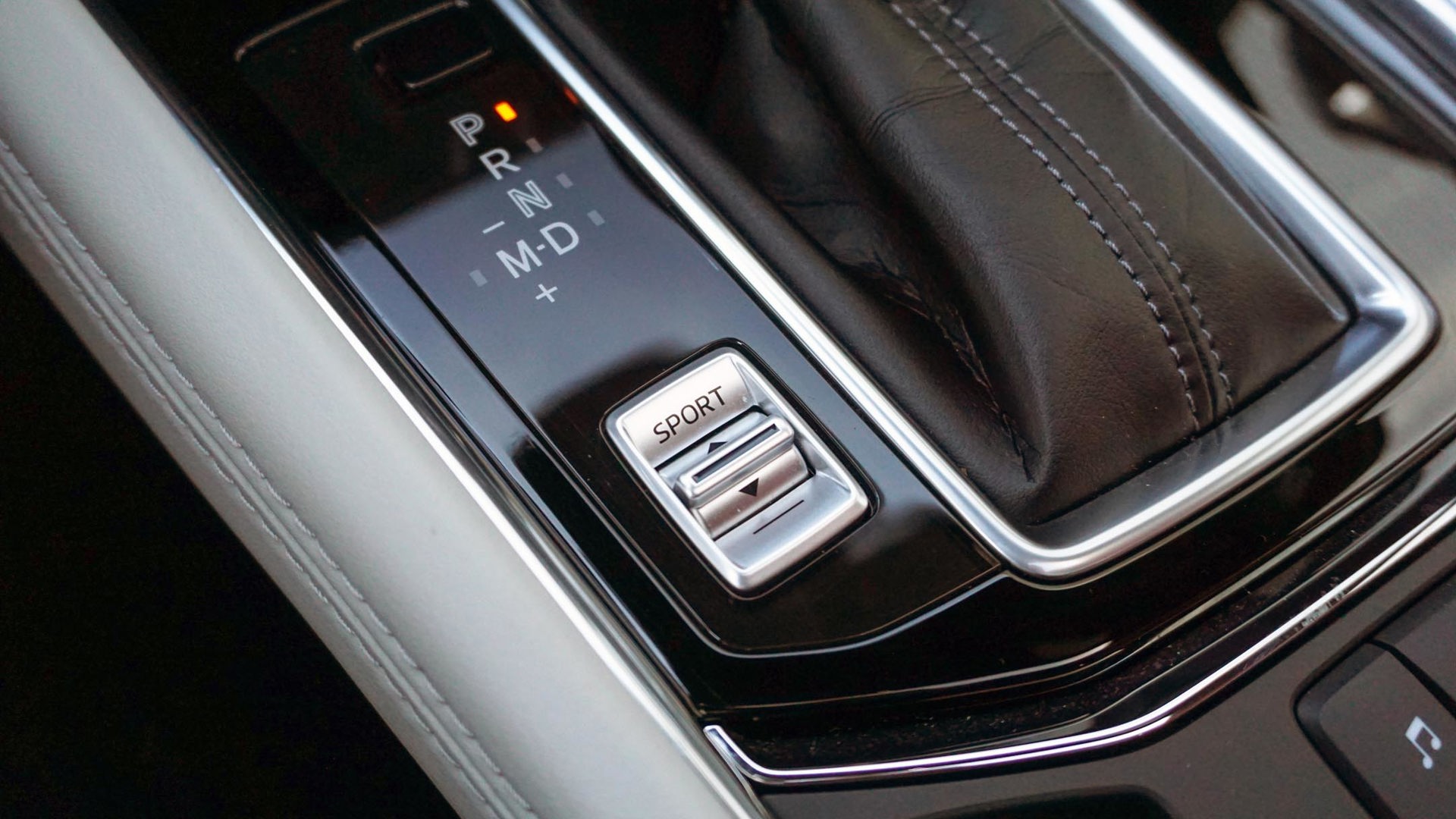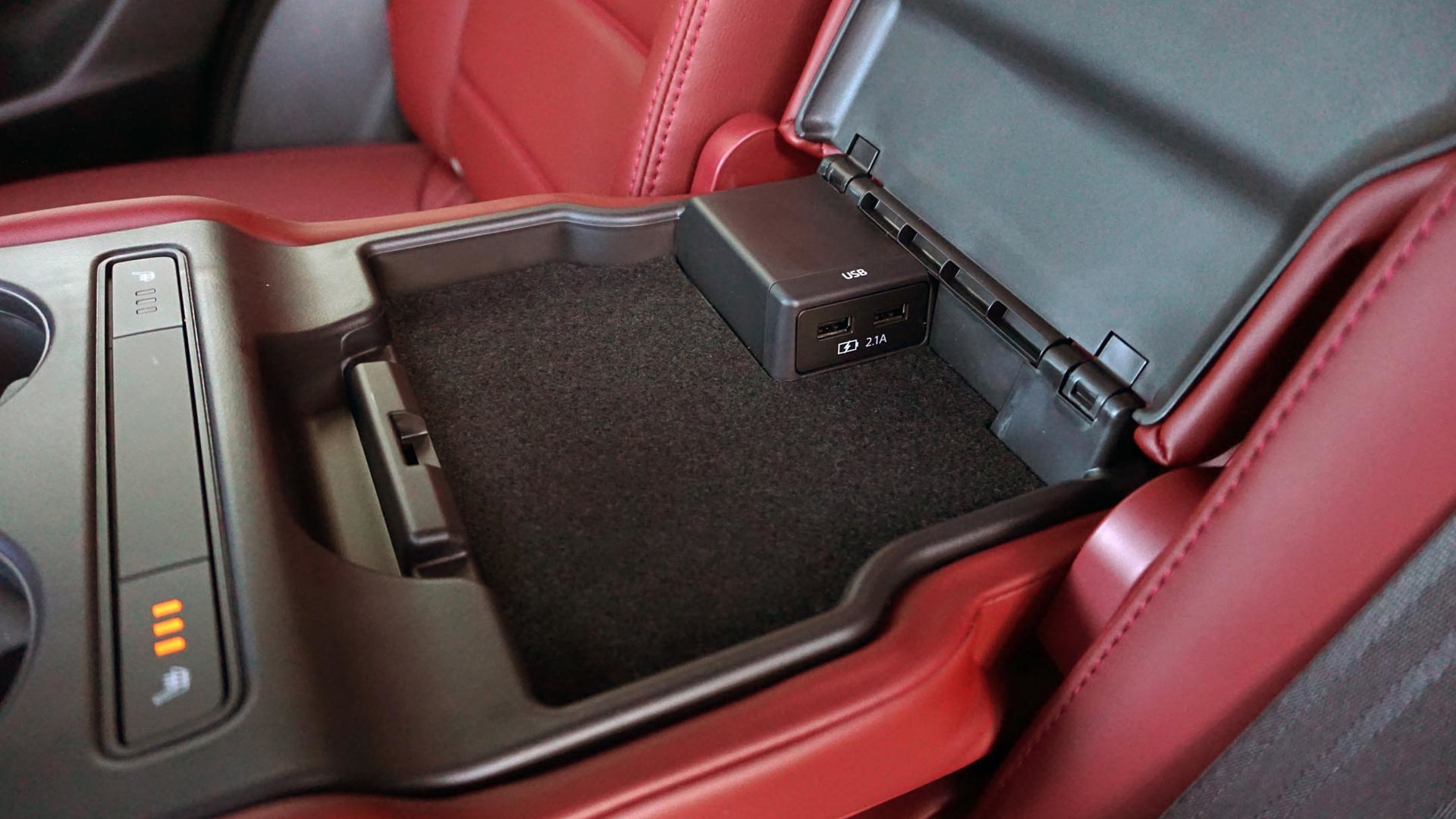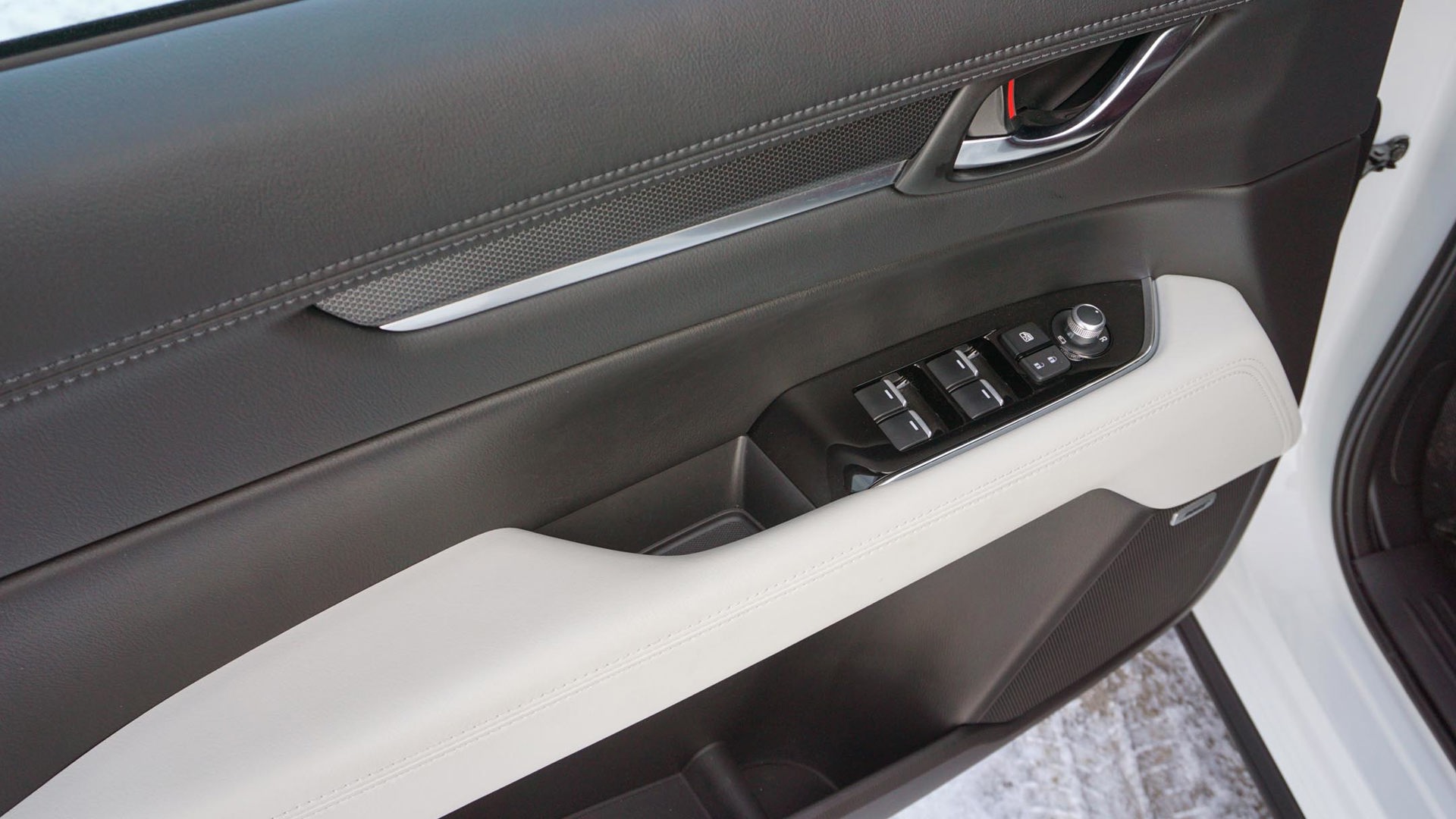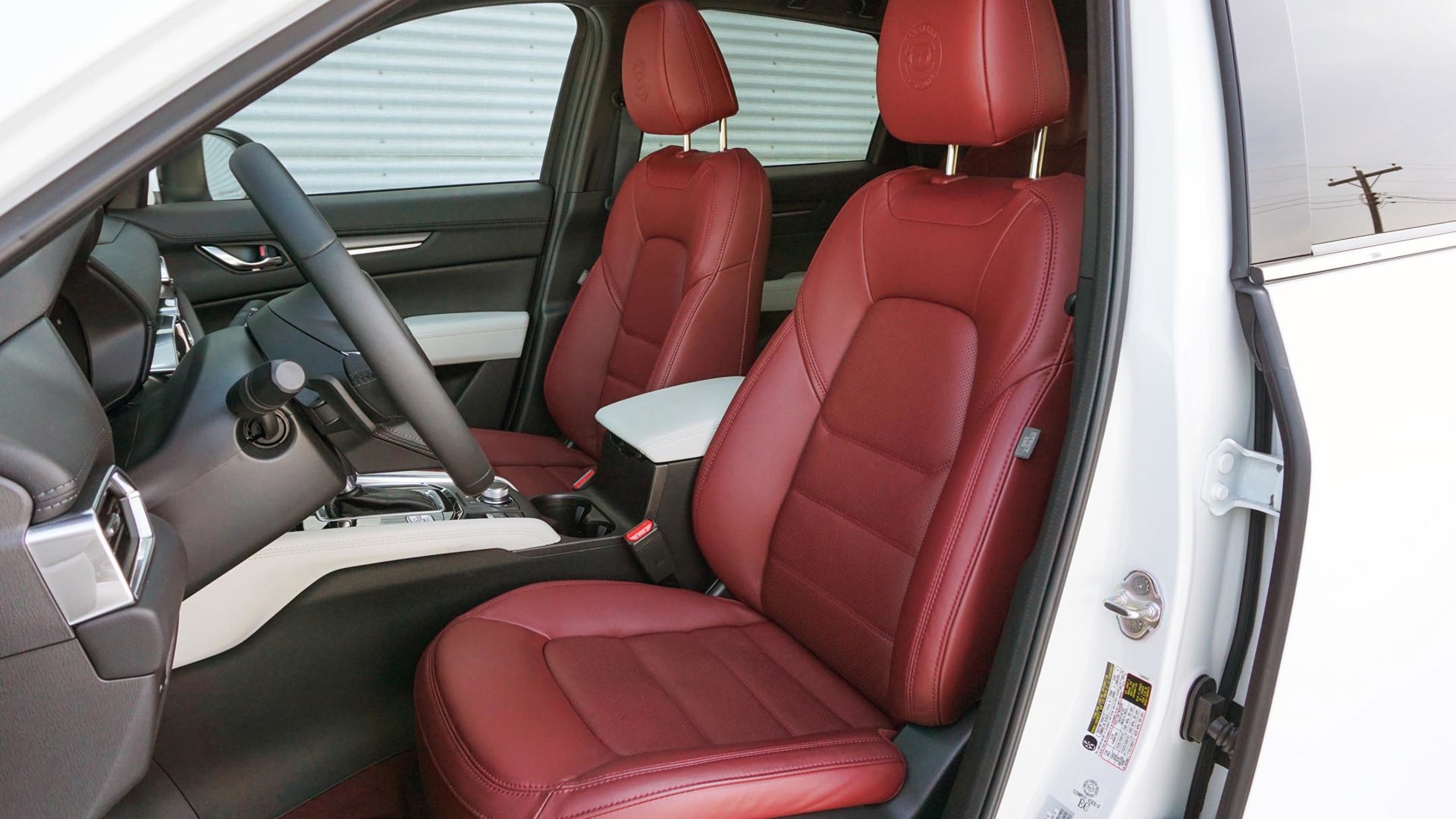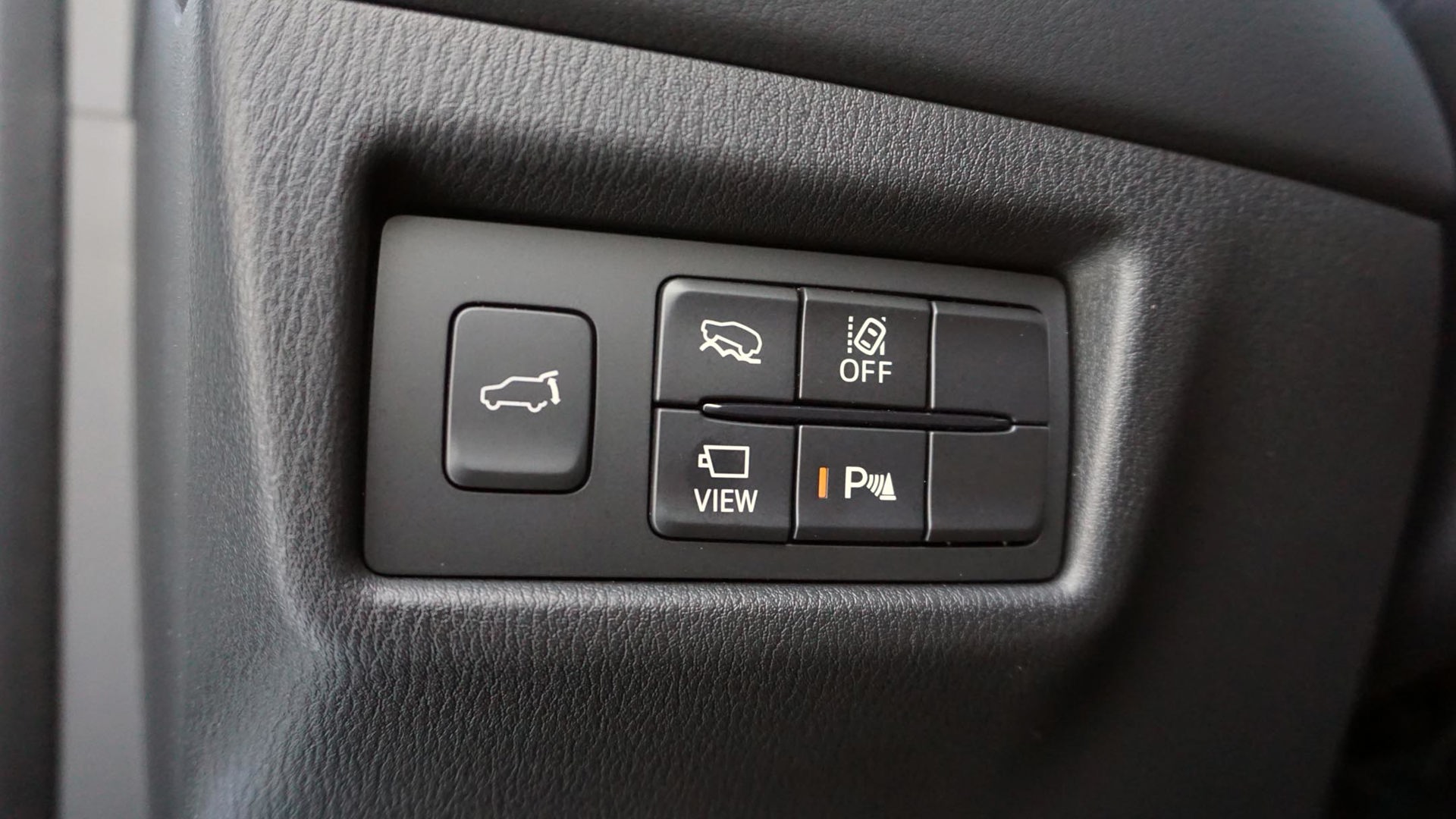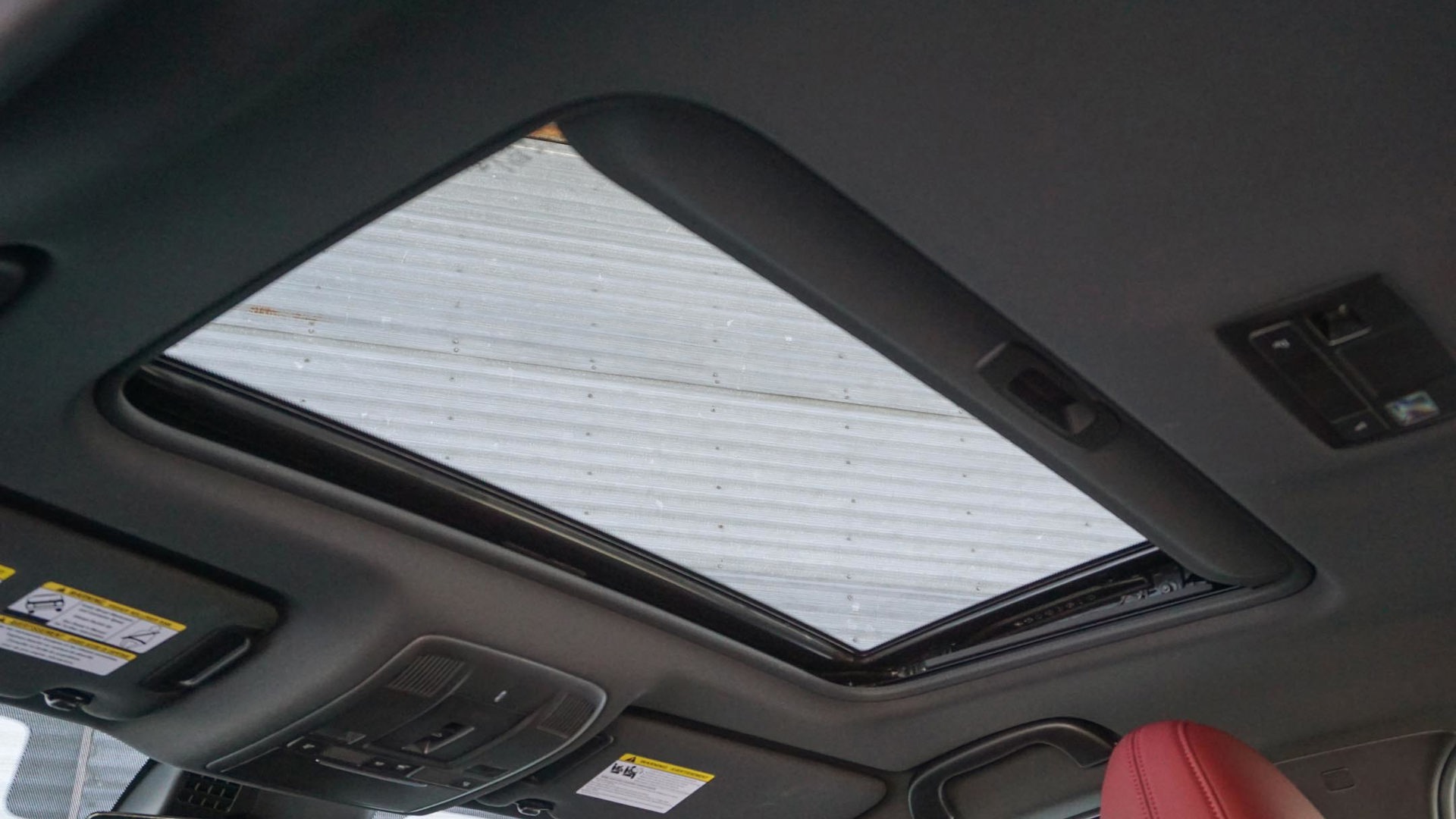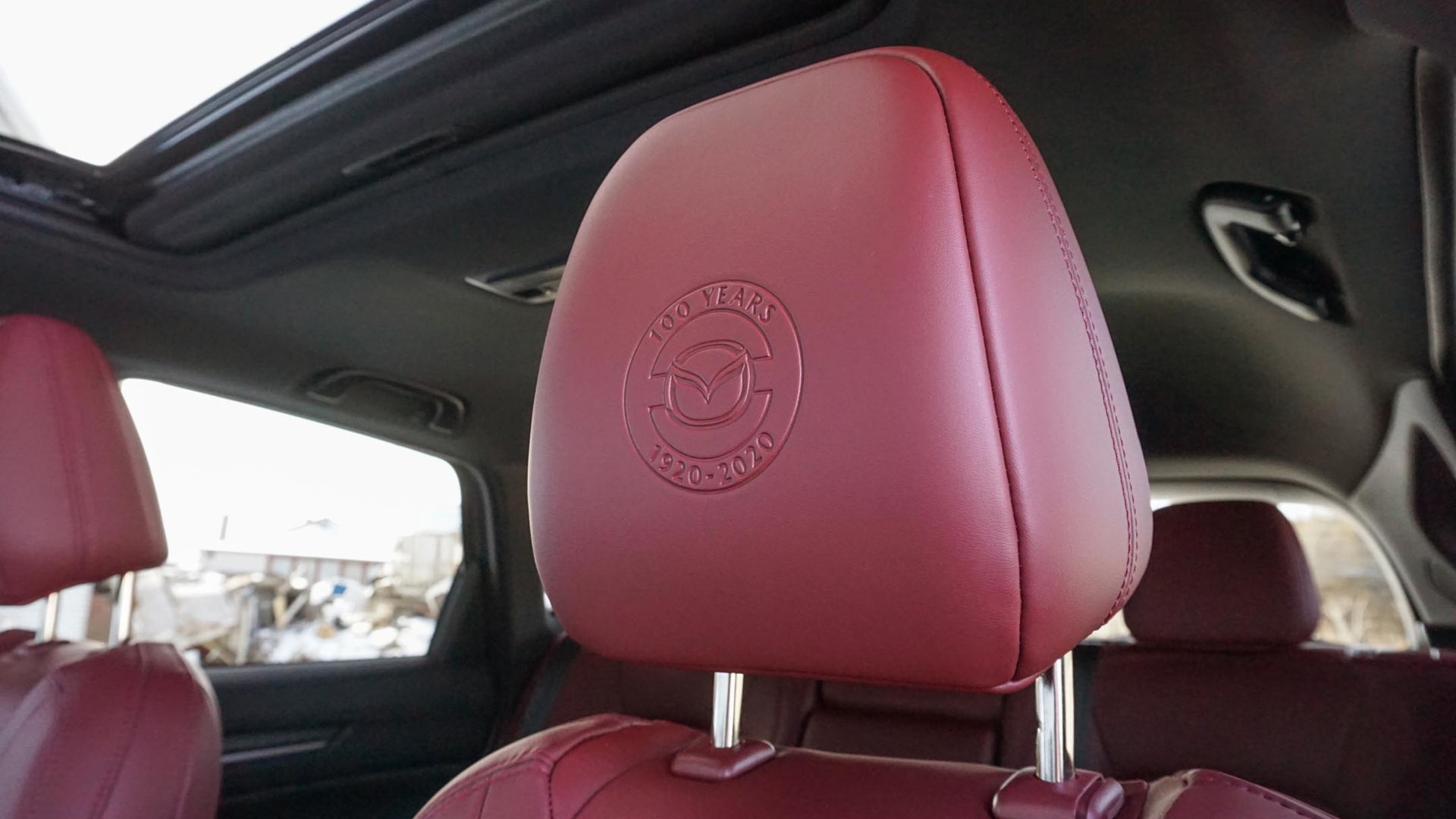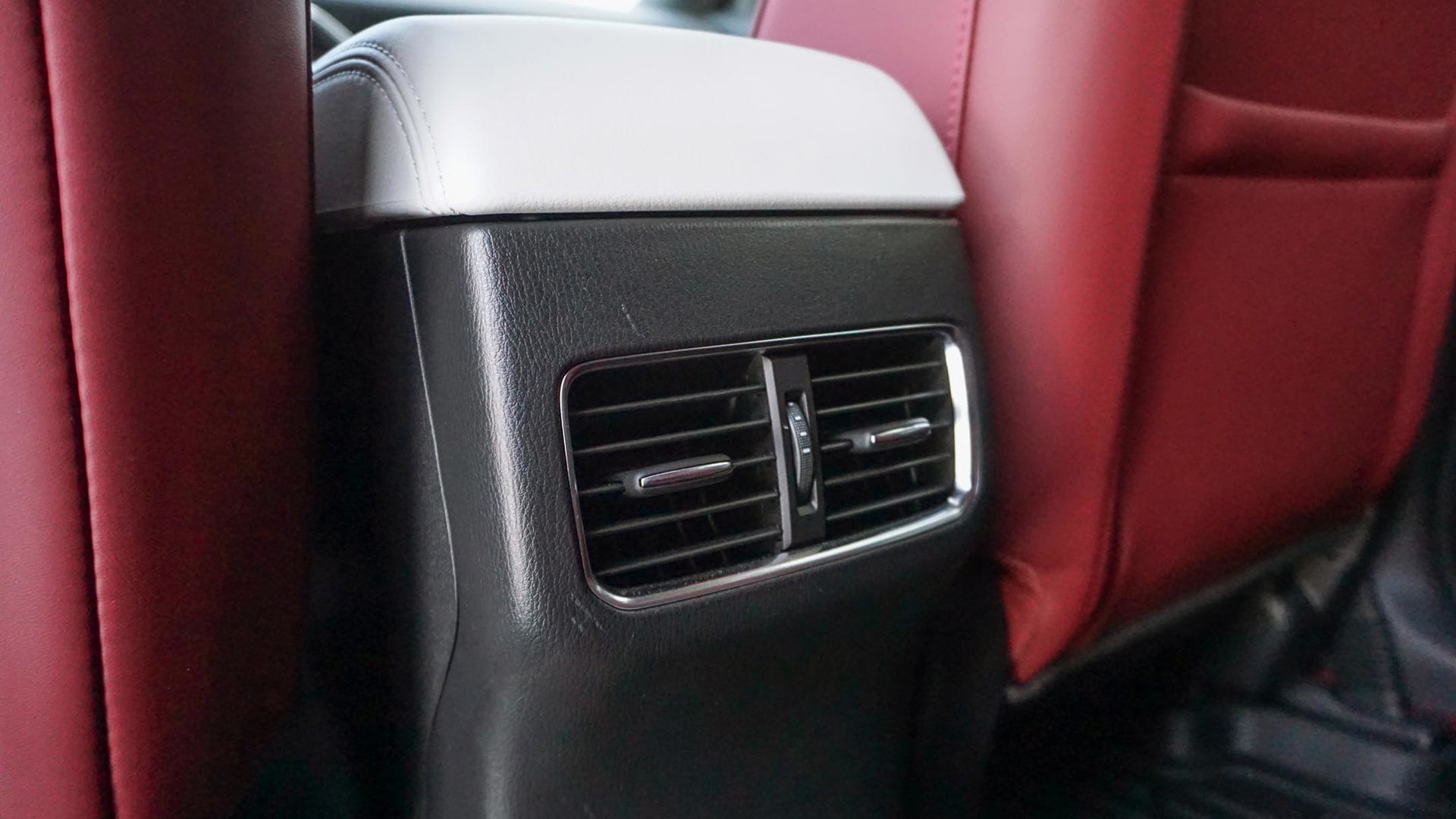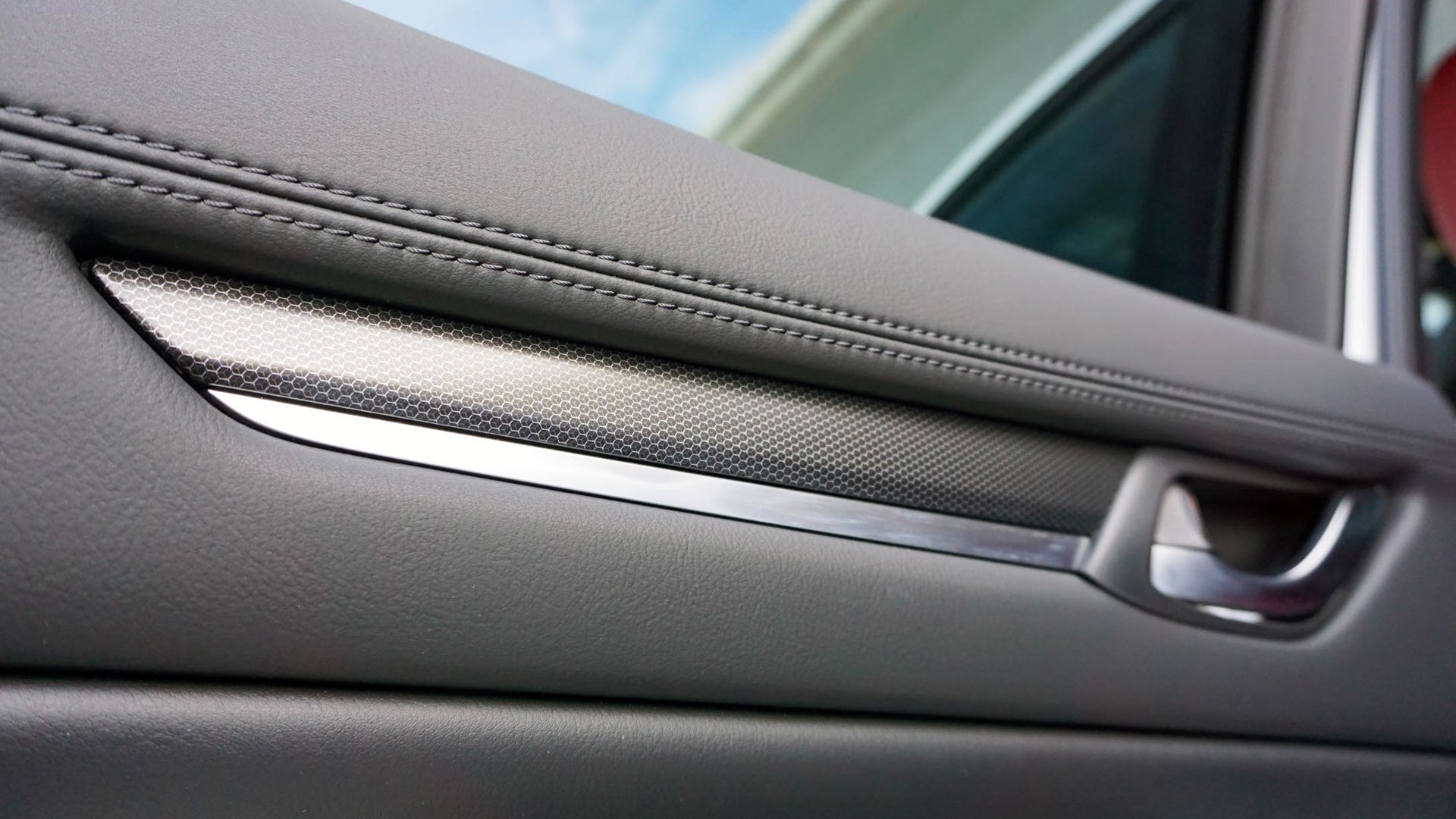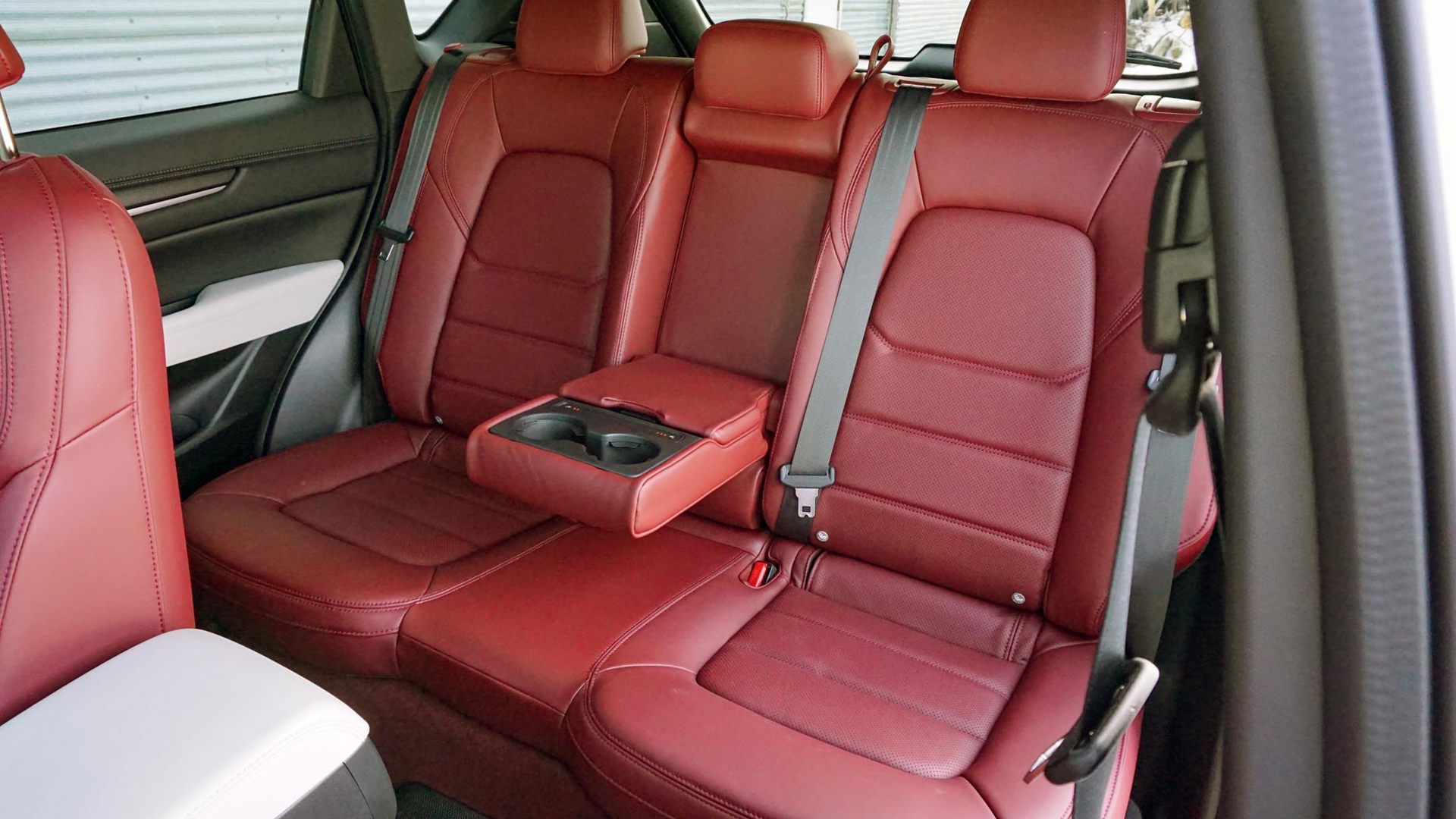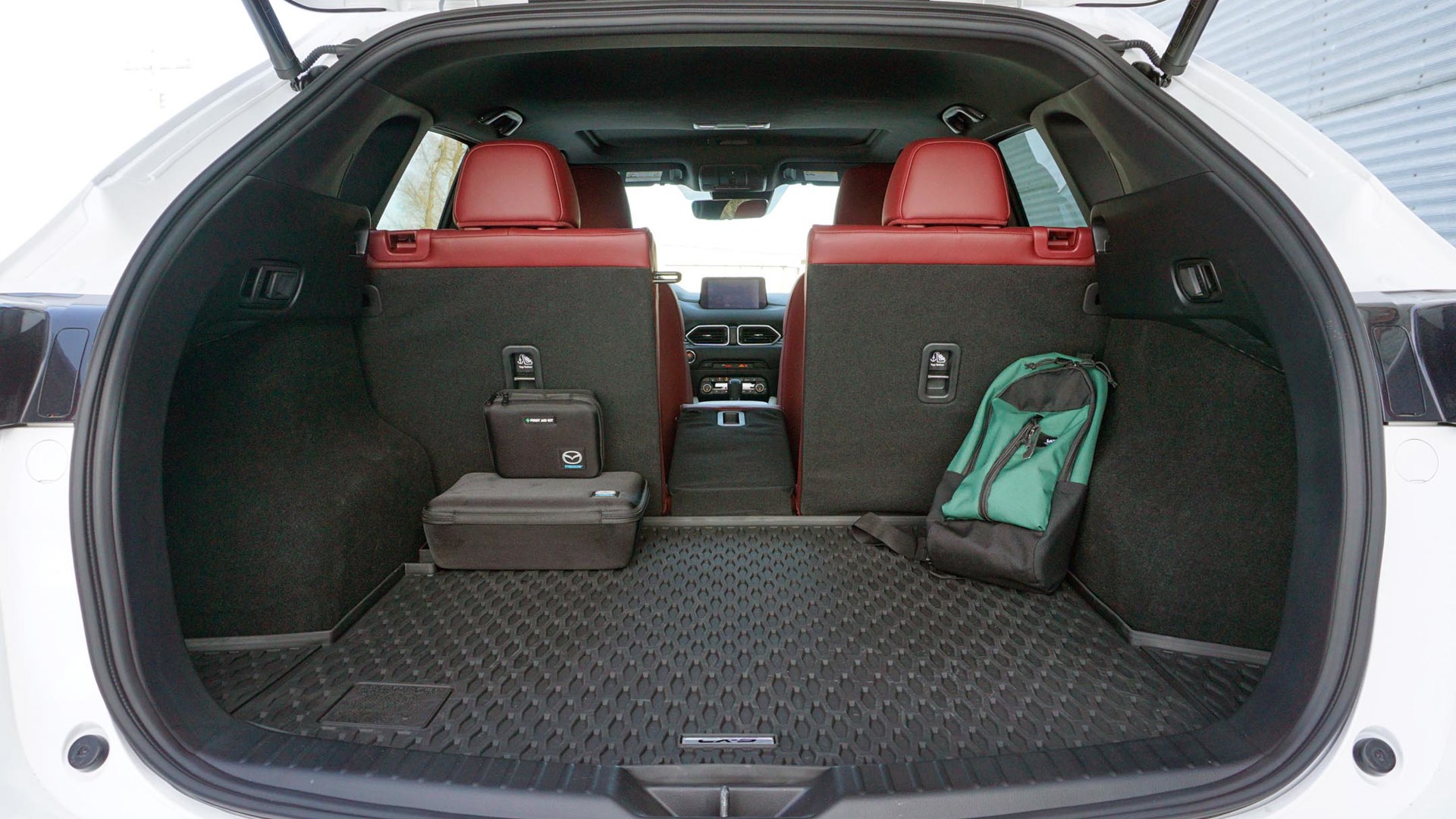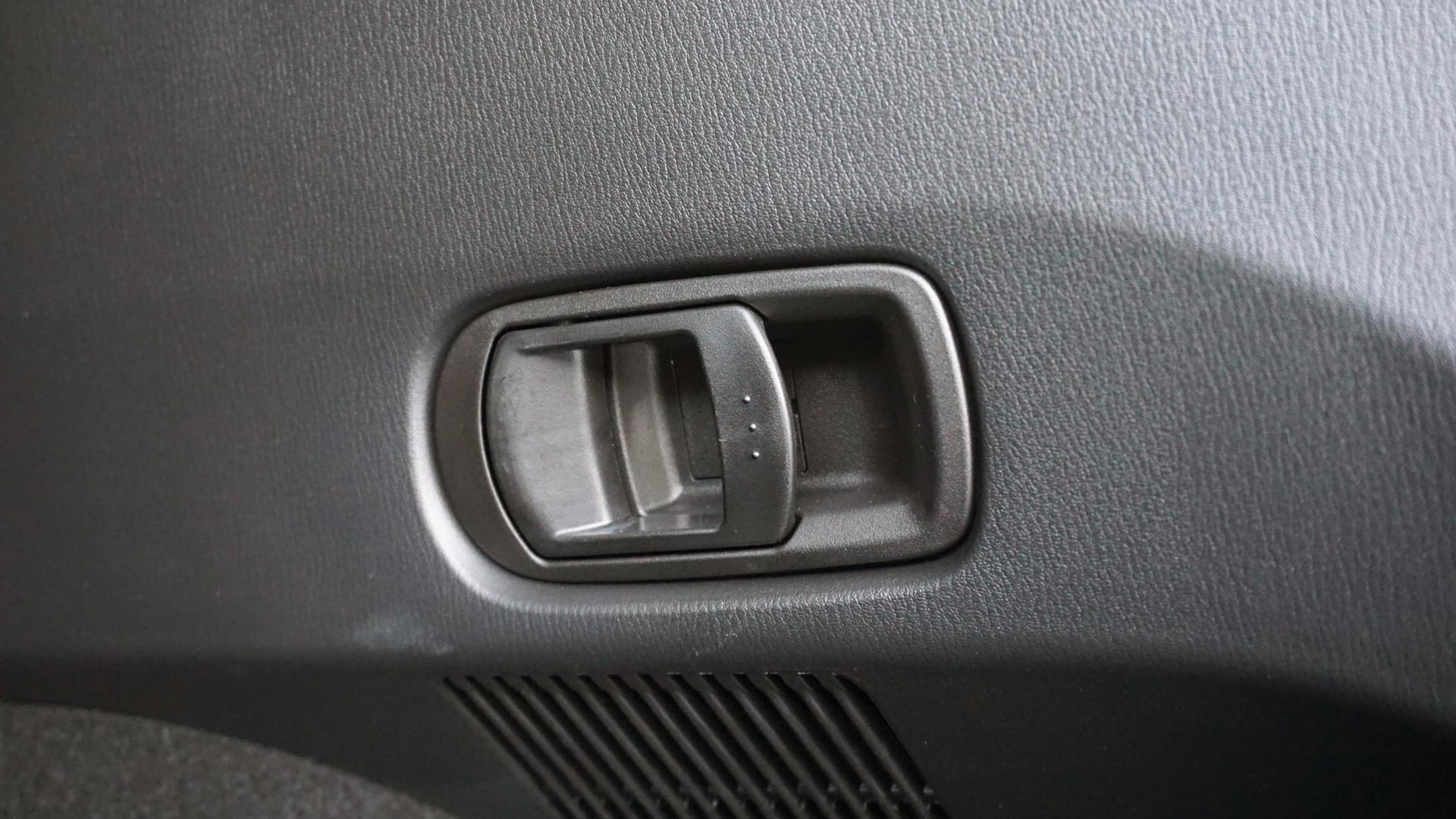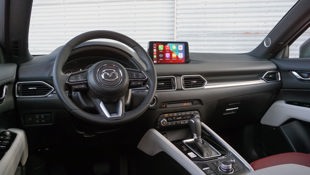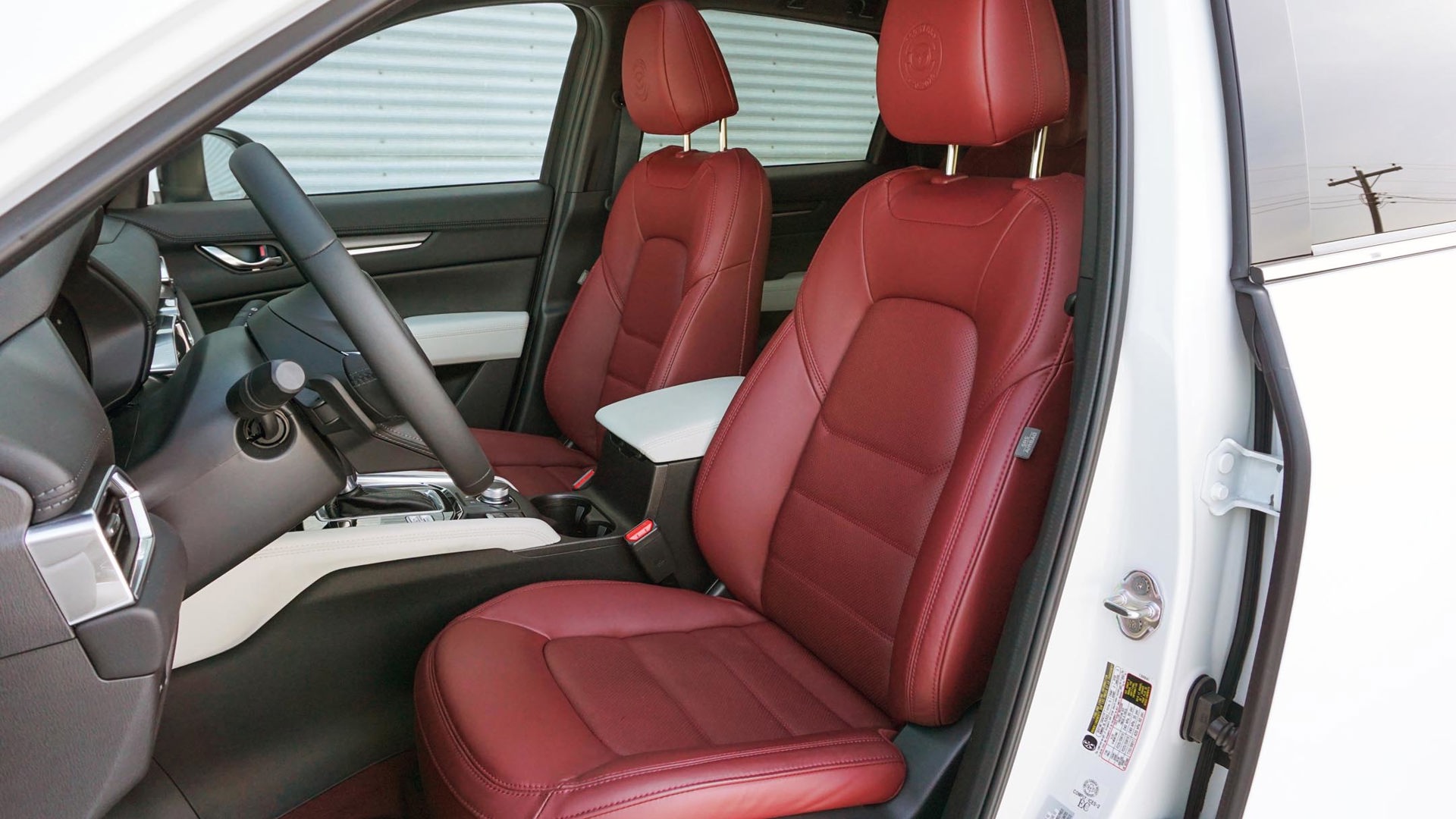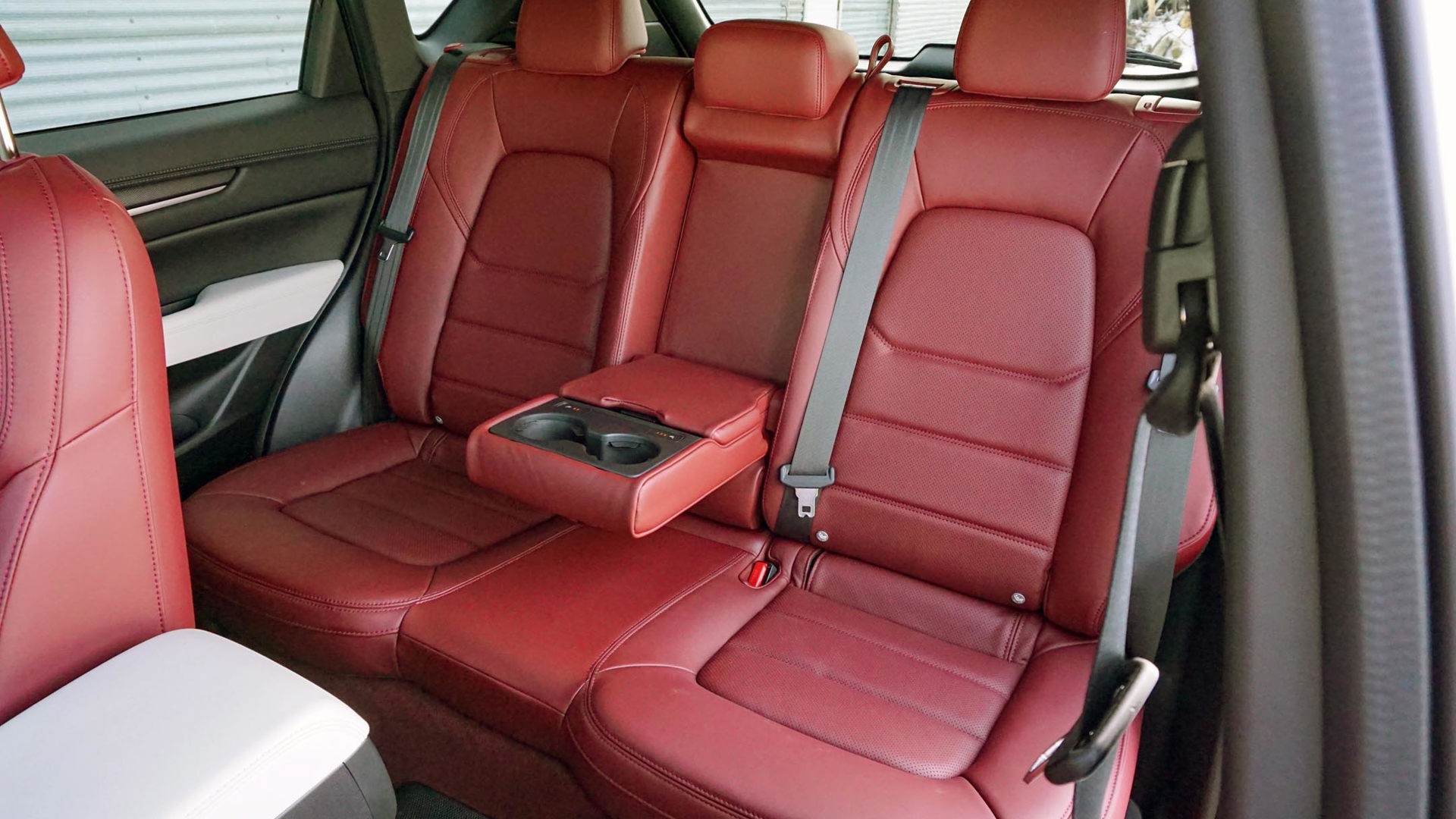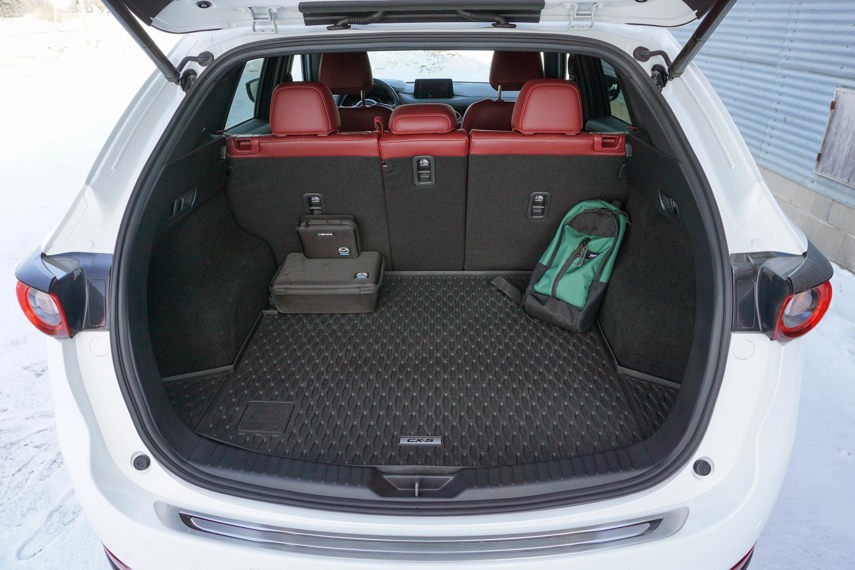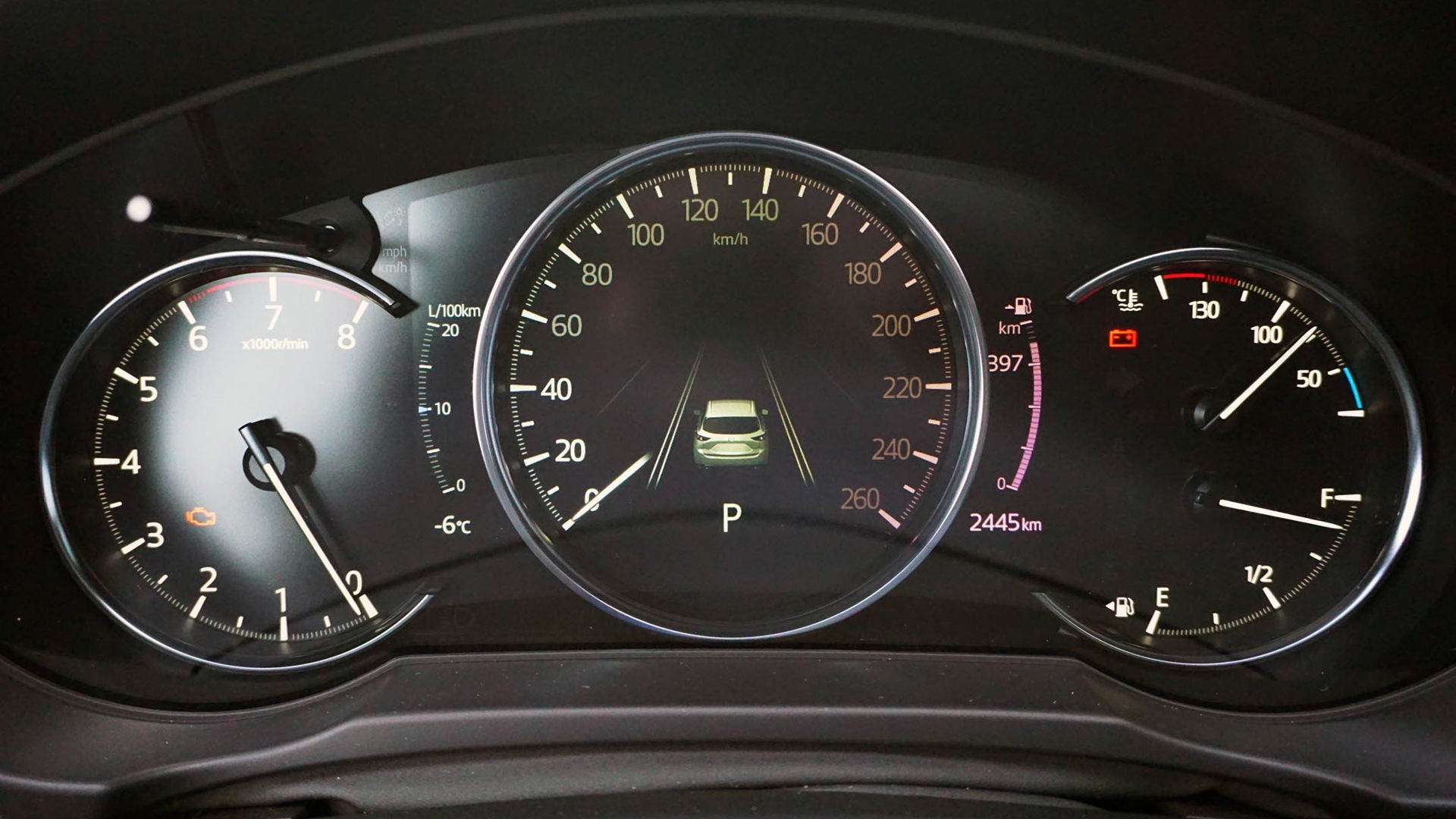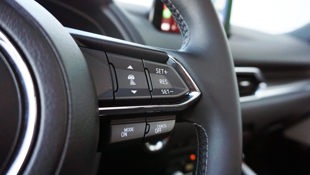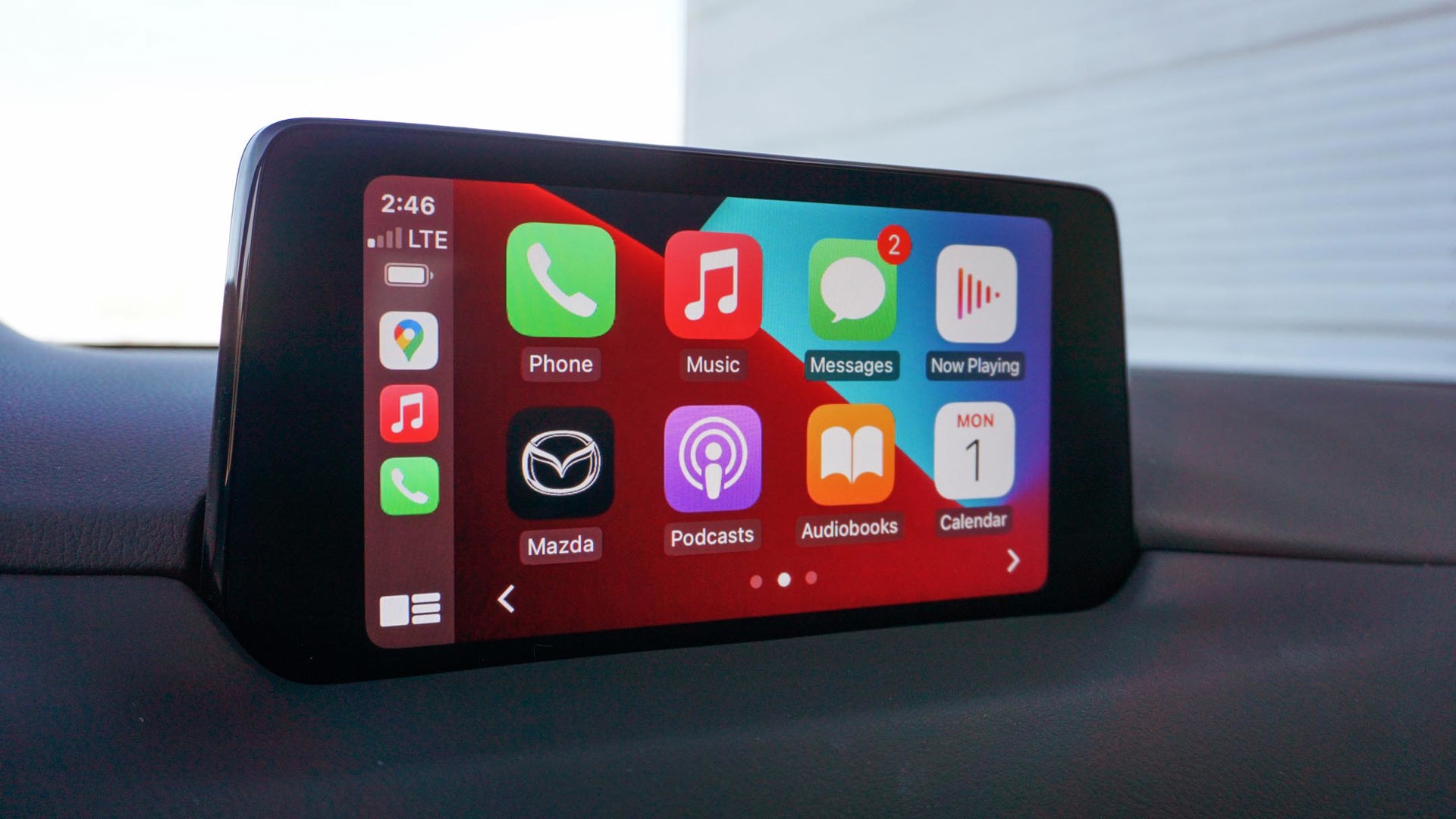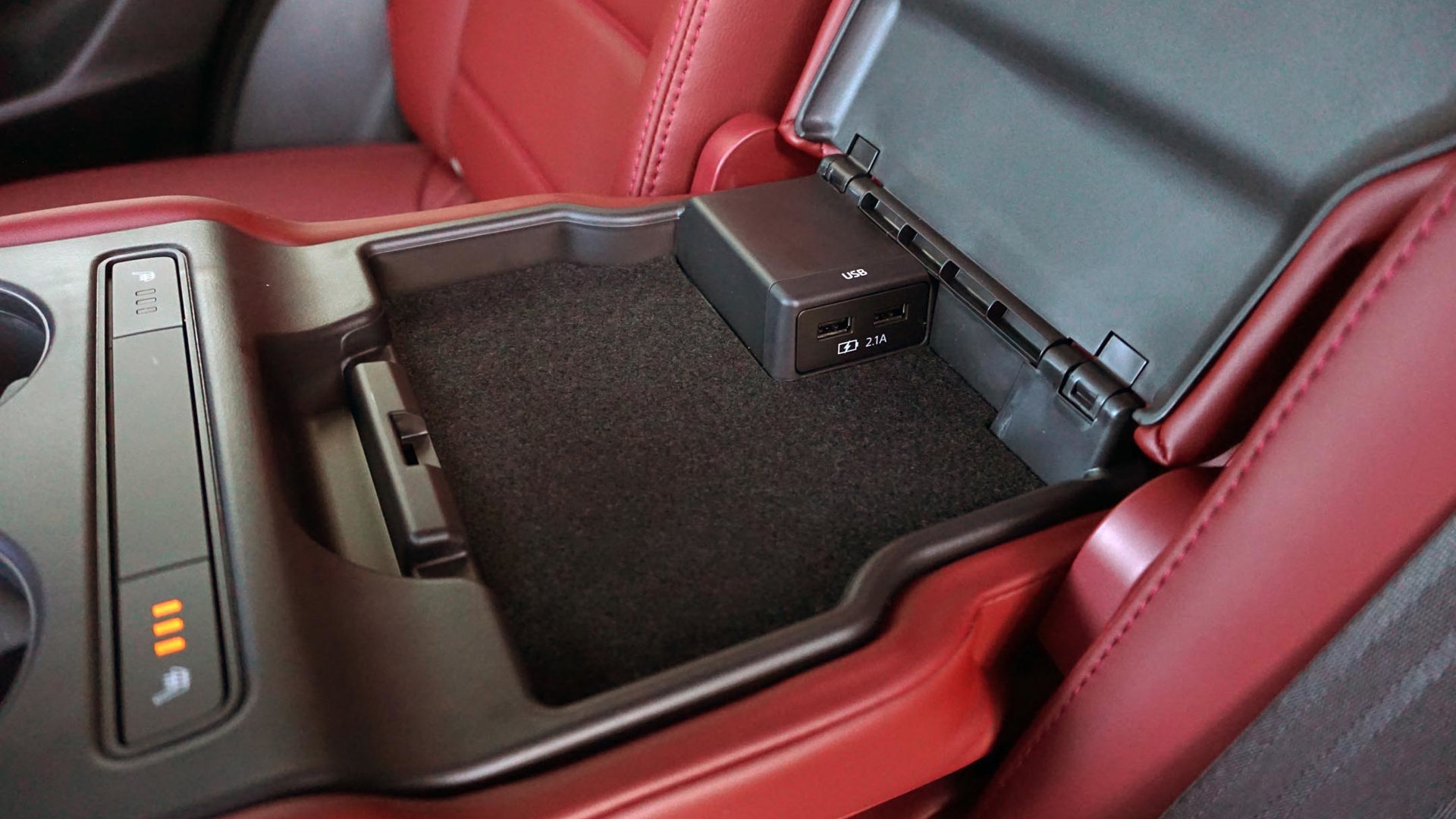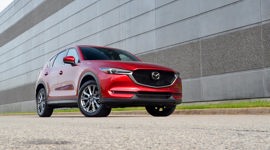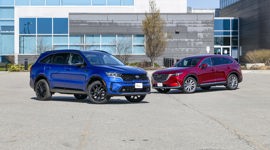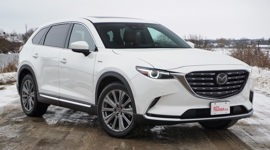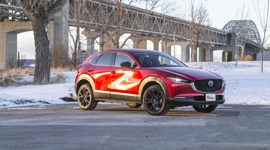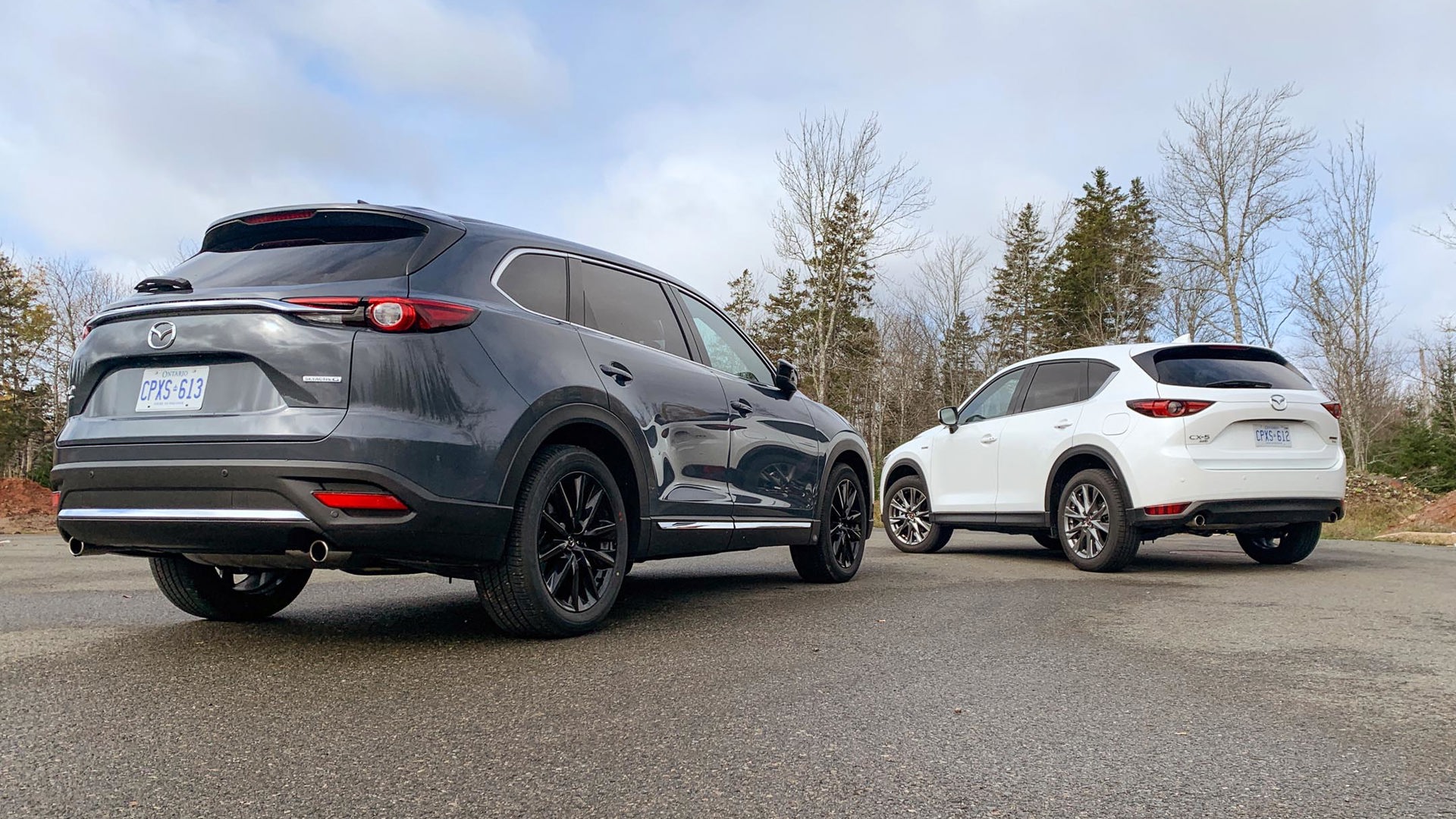 AutoTrader SCORE
AutoTrader SCORE
-
STYLING10/10
-
Safety8/10
-
PRACTICALITY7/10
-
USER-FRIENDLINESS8/10
-
FEATURES9/10
-
POWER10/10
-
COMFORT7/10
-
DRIVING FEEL9/10
-
FUEL ECONOMY8/10
-
VALUE9/10
As someone who greatly appreciates the cathartic principles of driving, conventional passenger cars like hatchbacks and sedans will always hold a special place in my heart.
Alas, I’m acutely aware that a shrinking segment of the car-buying public shares that same adoration, which I certainly appreciate. After all, crossovers are simply more versatile, and if there’s only room in the driveway for one vehicle it makes sense to choose a right-sized crossover.
But while the premium end of the market is brimming with options that are fast, fun, and functional, there are precious few mainstream options that are capable of providing thrills when the tarmac gets twisty. In fact, in the popular compact class there’s but one option altogether. And while the 2021 Mazda CX-5 sacrifices some outright functionality, it’s offset by a fun factor that’s rare in the segment.
Driving Feel: 9/10
With the XT version of the Subaru Forester unceremoniously scrubbed from existence with its latest iteration, there aren’t many fun-to-drive crossovers on the mainstream market no matter the size. Sure, there’s the Ford Edge ST and Explorer ST, but those are more about muscle than manoeuvrability. Then there’s the Blazer RS that the folks at Chevrolet are trying to pass off as a performance entry but in reality comes up short. That leaves the CX-5 as the only crossover of its kind to tap into the same sort of athletic acumen that’s been popular in the premium space for years.
No, it’s not quite as keyed up as, say, an AMG-tuned GLC-Class, but it has the same sort of baseline dynamism built into that Mercedes-Benz before the performance upgrades. That’s true no matter which of the two available engines reside under the hood, although adding a turbocharger to the party has obvious benefits. But more on that shortly.
That this brand is also responsible for the masterful MX-5 is apparent here, and the CX-5 is the rare crossover that I’d happily hustle around a winding road. The steering is all but perfect, feeling weighty and precise and offering genuine feedback about what’s happening on the road below, while the suspension is satisfyingly firm. Where the smaller CX-30 is just a little too stiff and the larger CX-9 slightly doughy, this compact crossover’s damping is dialled for car-like controllability.
Comfort: 7/10
It’s adequately compliant, too, with a ride quality that does enough to soak up bumps before coffee comes splashing through a cup’s lid. It’s not quite as supple as its larger sibling, but the CX-5 is about as comfortable a cruiser as the Toyota RAV4 or Ford Escape.
My tester’s cabin proved quiet, too, with the active noise cancellation that comes in the GT trim and above keeping all but the dull hum of its winter tires out. On top of that, the dual-zone automatic HVAC system pumped plenty of heat inside during a chilly week of testing, while warmers in the steering wheel and driver’s seat provided the desired pick-me-up after jumping out to snap photos on a particularly cold day of driving.
There was, however, a problem with the driver’s seat that I didn’t pick up on while testing the CX-9 just a few weeks prior: while the seat itself provided plenty of support overall, the bolstering on the lower cushion proved to be quite narrow, which was troublesome for a larger occupant like yours truly. And since those bolsters aren’t especially tall, my thighs were left resting uncomfortably on top rather than wedged between them. While it went unnoticed during shorter trips, it didn’t take long for discomfort to set in on long drives.
Practicality: 7/10
Despite the trouble with that chair, there’s plenty of space up front for both driver and passenger to settle in for extended stretches on the road. There’s more headroom here than in the RAV4 or Honda CR-V – although both of those entries offer more interior space overall.
While passenger room in the CX-5 is more than adequate, especially for children, the space is such that the front seatbacks will be within kicking distance of those strapped into car seats. Consider this an official warning. By comparison, both of those segment leaders, as well as the redesigned Nissan Rogue, boast more room for back-seat passengers.
Those seats feature a 40/20/40-split fold that allows long items to be transported while retaining proper space for four people inside, while each section can be lowered via quick-release handles just inside the tailgate opening. With the second row upright, there’s a wide cargo hold that measures 875 L – less than each of those key competitors. The CR-V in particular also boasts a lower liftover height, requiring a shorter reach when lugging heavy items into the back.
Power: 10/10
Those are the CX-5’s shortcomings, but it hits back with a wallop of output when fitted with the right motor. While the base engine is perfectly sufficient, the upgraded version that gets a turbocharger bolted to it is an absolute joy in this application. While a case could be made that this 2.5L’s generous output – as much as 250 hp and 320 lb-ft of torque, with the right fuel in the tank – is a little excessive for smaller packages like the CX-30 or the Mazda3 it’s now offered in, and feels somewhat uninspired in the two-tonne CX-9, it’s quite the shot in the arm for this small CUV, making it the most stout in the segment by a healthy margin.
Just like the Mazda6 sedan, the turbo motor delivers the perfect performance levels for something this size to feel special. Throttle response is outstanding, particularly with the drive selector set to sport, the roughly 1,750-kg (3,858-lb) crossover darting off the line with a unique kind of quickness for the class. The powertrain can, however, be caught in passing purgatory from time to time, with the six-speed automatic transmission failing to realize what’s being requested quickly enough, leaving the engine languishing in turbo lag at lower engine speeds. The paddle shifters are the quickest way to provide a wakeup call, with downshifts spiking revs to tap into all that turbocharged torque that’s handy for blasting around slower traffic or blowing off some steam.
Fuel Economy: 8/10
Despite how stout this turbo motor is – and the all-wheel drive system that comes paired to it – its appetite for fuel is class-competitive. The turbocharged 2.5L can also run on regular-grade gas without much performance penalty, with output dropping to a still-impressive 227 hp and 310 lb-ft of torque. Either way, it’s officially rated by Natural Resources Canada (NRCan) to burn 10.8 L/100 km in the city, 8.7 on the highway, and 9.8 combined, though topping those numbers wasn’t difficult despite the cold temperatures and winter tires.
An initial evaluation drive spanning some 260 km consisting mostly of secondary highways on a chilly but clear day saw the CX-5 settle in at a combined 9.1 L/100 km. For context, the non-turbo 2.5L is rated at a combined 9.3 L/100 km (9.0 with cylinder deactivation) with all-wheel drive, while a fall test of the smaller CX-30 powered by that engine finished with a final tally of 8.7 L/100 km. The Nissan Rogue, meanwhile, that’s about as powerful as that base engine consumed 8.5 L/100 km. The final count for the turbocharged CX-5 was 9.8 L/100 km, bang-on its official rating, over 600 km total.
User Friendliness: 8/10
Make no mistake, while the Mazda CX-5 is fun to drive it’s not a hassle to live with as a result, because it’s just a regular crossover that happens to be enjoyable. It’s not like, say, a Mercedes-AMG A 35 that’s a hot hatch first and foremost, so its usability isn’t handicapped in any way. That means it’s just as suitable for family life – or whatever else is thrown its way – as the segment-leading CR-V despite being a little short on space.
The rear doors aren’t quite as large as those of its closest competitors, but the doors open wide enough should little ones inside require help buckling in. The back bench also features a folding centre armrest that houses not only cupholders, as is customary in crossovers like this, but a small covered storage bin with two USB charging ports inside in all but base models, and the buttons for the three-stage heated seats (GT trim and above).
Mazda’s switchgear won’t be winning any awards for style but it is commendable for its simplicity. Climate controls are easy to understand and operate, while the steering wheel features even more straightforward buttons. Down on the console, a conventional gear selector is joined by a basic rocker switch for sport mode, an electronic parking brake toggle, and a button for the auto-hold function that allows the brake pedal to be released once the crossover is brought to a halt while keeping the brakes themselves engaged and the brake lights illuminated.
The console is also where supplementary infotainment controls are found, including a rotary knob that must be used when the vehicle is in motion. On one hand, at least there’s a touchscreen inside (an eight-inch unit is standard throughout the lineup), unlike the CX-30 that does without; but on the other, it can be a frustrating system to use because of that physical control, which requires tedious cycling through functions that’s far more distracting than a few simple taps of a touchscreen. Even then, it’s not the most responsive display on the market, especially at start-up when it’s incredibly laggy.
Features: 9/10
Android Auto and Apple CarPlay are standard in the CX-5, though both interfaces were designed to be interacted with via touch, making them somewhat clunky on the go because of that controller. That iOS connection gets upgraded to a wireless one in the GT trim and up, though there’s no wireless phone charger to go with it, which is a bit like going to an all-you-can-eat buffet and being forced to use saucers instead of dinner plates.
Moving back to the start of the lineup, there’s all kinds of standard stuff packed into the cheapest trim ($28,500 before freight and tax; $30,000 with all-wheel drive) that’s powered by the naturally aspirated engine: alloy wheels, heated door mirrors, acoustically insulated glass for the front doors and windshield, heated front seats, and that eight-inch touchscreen with CarPlay and Android Auto.
The list gets incrementally better from there, with lots of good stuff like all-wheel drive, leather upholstery, ventilated front seats, heated rear seats, and a 10-speaker stereo featured with the GT trim ($37,800; $39,800 with the turbo engine). Then there’s the Signature for $42,050 that’s powered by the turbo motor and gets upgraded trim bits inside, or this $43,550 Anniversary Edition that features a swanky red-on-white theme.
Styling: 10/10
Skipping this stylish centennial package still leaves the CX-5 as one of the most striking crossovers of any size in both the mainstream and premium segments. Mazda’s design language manages to transform what’s a fairly ordinary shape into a gracefully aging machine, sporting all kinds of character without going overboard.
The cabin isn’t quite as pleasing to the eye without some contrast colours, though it’s not just this red, white, and black 100th Anniversary pack that adds some flair. The Kuro Edition ($36,400) gets red leather upholstery on the seats, while the GT can be outfitted with ivory leather for those that might be so brave.
Value: 9/10
Considering it’s one of the few entries in the segment to offer an upgraded engine, the CX-5 is competitively priced next to models like the CR-V that feature but one motor. That segment-leader is priced between $29,805 and $43,405 before tax, leaving this Mazda well within range while feeling far more upmarket at the top of the lineup.
Safety: 8/10
Unfortunately, Mazda misses the mark here set by Honda – not to mention Toyota or even Hyundai with its overhauled 2021 Santa Fe – of including an array of advanced safety systems in every trim. While some stuff like forward automatic emergency braking and blind-spot monitoring with rear cross-traffic alert is standard, features like lane-departure warning and lane-keep assist, pedestrian detection, and adaptive cruise control that works in stop-and-go traffic comes in the GS trim and up, while the GT trim adds a head-up display, and the Signature gets front and rear parking sensors, a surround-view system, and reverse automatic braking.
The Verdict
The 2021 Mazda CX-5 may not be a full-fledged sporting crossover, but it manages to pack some impressive performance capabilities inside a sensible package. No, it’s not quite as spacious as most of its competitors, but it’s far more enjoyable to drive than anything else in the segment. That might not lead the list of reasons to buy a crossover in the first place, but I have to imagine at least a small percentage of shoppers might be forced to prioritize functionality but aren’t especially keen about saying goodbye to driving fun in the process.
Sure, it leaves some practicality on the table compared to other crossovers like the Honda CR-V or Toyota RAV4, but it’s genuinely enjoyable from behind the wheel – and that’s something that’s exceedingly rare on the mainstream market.
| Engine Displacement | 2.5L |
|---|---|
| Engine Cylinders | Turbo I4 |
| Peak Horsepower | 250 hp @ 5,000 rpm |
| Peak Torque | 320 lb-ft @ 2,500 rpm |
| Fuel Economy | 10.8 / 8.7 / 9.8 L/100 km cty/hwy/cmb |
| Cargo Space | 875 / 1,687 L seats up/down |
| Model Tested | 2021 Mazda CX-5 100th Anniversary Edition |
| Base Price | $43,550 |
| A/C Tax | $100 |
| Destination Fee | $1,950 |
| Price as Tested | $45,600 |
|
Optional Equipment
None
|
|
